
Start your career as a 2D animator for film, TV and games! CG Spectrum’s offers specialized online career training and mentorship from expert animators working at top studios. Get access to career services and a supportive community. Learn more.
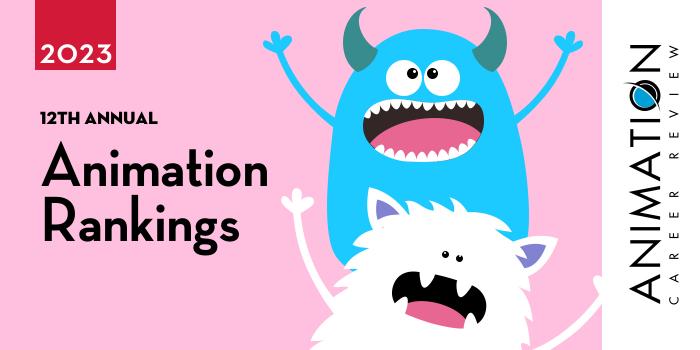
| Ranking | School | State | % |
|---|---|---|---|
| 1 | California Institute of the Arts | California | Top 1% |
| 2 | Savannah College of Art and Design | Georgia | Top 1% |
| 3 | Ringling College of Art and Design | Florida | Top 2% |
| 4 | School of Visual Arts | New York | Top 2% |
| 5 | University of Southern California | California | Top 3% |
| 6 | Rhode Island School of Design | Rhode Island | Top 3% |
| 7 | Pratt Institute | New York | Top 4% |
| 8 | Gnomon School of Visual Effects | California | Top 4% |
| 9 | University of California, Los Angeles | California | Top 5% |
| 10 | New York University | New York | Top 5% |
| 11 | Brigham Young University | Utah | Top 6% |
| 12 | ArtCenter College of Design | California | Top 6% |
| 13 | Rochester Institute of Technology | New York | Top 7% |
| 14 | Full Sail University | Florida | Top 7% |
| 15 | Academy of Art University | California | Top 8% |
| 16 | DePaul University | Illinois | Top 8% |
| 17 | School of the Art Institute of Chicago | Illinois | Top 9% |
| 18 | Carnegie Mellon University | Pennsylvania | Top 9% |
| 19 | Texas A&M University | Texas | Top 10% |
| 20 | California College of the Arts | California | Top 10% |
| 21 | Otis College of Art and Design | California | Top 15% |
| 22 | The Ohio State University | Ohio | Top 15% |
| 23 | University of Central Florida | Florida | Top 15% |
| 24 | San Jose State University | California | Top 15% |
| 25 | Massachusetts College of Art and Design | Massachusetts | Top 15% |
| 26 | Columbia College Chicago | Illinois | Top 15% |
| 27 | University of Texas at Dallas | Texas | Top 15% |
| 28 | Columbus College of Art & Design | Ohio | Top 15% |
| 29 | DigiPen Institute of Technology | Washington | Top 15% |
| 30 | Maryland Institute College of Art | Maryland | Top 20% |
| 31 | Florida State University | Florida | Top 20% |
| 32 | California State University, Fullerton | California | Top 20% |
| 33 | Minneapolis College of Art and Design | Minnesota | Top 20% |
| 34 | College for Creative Studies | Michigan | Top 20% |
| 35 | Laguna College of Art and Design | California | Top 20% |
| 36 | Purdue University | Indiana | Top 20% |
| 37 | University of Colorado, Denver | Colorado | Top 20% |
| 38 | Rocky Mountain College of Art and Design | Colorado | Top 20% |
| 39 | Clemson University | South Carolina | Top 20% |
| 40 | University of the Arts | Pennsylvania | Top 20% |
| 41 | Arizona State University | Arizona | Top 25% |
| 42 | California State University, Long Beach | California | Top 25% |
| 43 | The New School/Parsons | New York | Top 25% |
| 44 | Loyola Marymount University | California | Top 25% |
| 45 | Cleveland Institute of Art | Ohio | Top 25% |
| 46 | Kansas City Art Institute | Missouri | Top 25% |
| 47 | University of Florida | Florida | Top 25% |
| 48 | Drexel University | Pennsylvania | Top 25% |
| 49 | University of North Carolina School of the Arts | North Carolina | Top 25% |
| 50 | California State University, Los Angeles | California | Top 25% |
Our 2023 list -our twelfth annual- of the Top 50 Animation School Programs in the US. For an explanation of ranking criteria, click here.

The Animation Programs at California Institute of the Arts (CalArts) are housed in the School of Film/Video where famous alumni such as Chris Buck (Frozen), John Lasseter (Toy Story, Cars), and Tim Burton (Beetlejuice, Edward Scissorhands, Ed Wood) got their start. The largest of CalArts’ six schools, the School of Film/Video focuses on intensive programs that emphasize comprehensive and technical artistic training. Programs, including BFA and MFA degrees in Experimental Animation and a BFA in Character Animation, are led by experienced professionals working in computer graphic (CG), traditional, and independent animation.
The BFA in Character Animation at California Institute of the Arts is a four-year program that prepares students to work in both traditional and CG animation environments. In addition to required courses such as Acting for Animators and Perspective, the intensive Character Animation curriculum includes 2D Character Animation, Animation Layout, CG Foundation, Digital Methods, Life Drawing, Storyboarding, Character Animation I-IV, Film Workshop I-IV, and Professional Preparation. This four-year program concludes with the creation of a professional portfolio and several short films.
Students the Experimental Animation BFA and MFA Programs at in CalArts collaborate closely with mentors to develop skills in animation processes, approaches and techniques. Examples include 2D animation, digital production, installation, motion capture, multipane, performance animation, programming, and stop motion. Experimental Animation students will participate in independent study, lecture courses, and the internship program and attend seminars, workshops, and visiting artist lectures.
BFA students will take courses such as Animation Production, Animation Workshop, Concept Development, Film History, and Motion and Meaning. MFA course examples include Digital Workflow for Animators, Drawn Techniques for the Experimental Animator , First Year Shorts, Sound for Experimental Animation, and The Digital Path for Animation. Undergraduate students (including Character Animation students) may add the Digital Arts Minor to develop skills in video editing, digital sound production, computer programming, web design, digital fabrication, and digital arts.
The BFA Program takes four years to complete and the MFA takes three years to complete. Students in both programs will produce a professional portfolio and final project to graduate.
California Institute of the Arts graduates go on to successful careers in advertising, animation, film/video, and marketing. Many have launched their own freelance careers and studios.
In 1961, Walt and Roy Disney formed California Institute of the Arts through a merger of the Los Angeles Conservatory of Music and the Chouinard Art Institute. Today, CalArts serves more than 1,400 students enrolled in over 70 degree programs across six schools including the School of Critical Studies, The Sharon Disney Lund School of Dance, the School of Art, the School of Film/Video, The Herb Alpert School of Music, and the School of Theater. California Institute of the Arts also encompasses the Roy and Edna Disney/CalArts Theater (REDCAT), located in downtown LA, and the Community Arts Partnership (CAP) with community organizations and public schools across LA County.
California Institute of the Arts is accredited by the Western Association of Schools and Colleges (WASC) Senior College and University Commission (WSCUC). The school is also an accredited institution member of the National Association of Schools of Dance (NASD).

The School of Animation and Motion at Savannah College of Art and Design (SCAD) houses the world’s first specialized degree in Motin Media Design, three Animation degrees, and three Visual Effects (VFX) options for students seeking an undergraduate or advanced degree. Students in all School of Animation and Motion programs have access to more than 800 networked computers along with a 60,000 square-foot, state-of-the-art digital media center consisting of a green screen lab, in-house theater, and studio environment.
Students in all programs and at all degree levels receive instruction from celebrated professors who have worked at major studios and on award-winning productions such as Ice Age, Pocahontas, and The Lion King.
Programs for animators include the BFA, MA, and MFA in Animation. Available Minors include Animation, Animated Illustration and Publication Design, and Concept Design for Animation and Games. Examples of Minors that complement the Animation Programs include Visual Effects, Technical Direction, Storyboarding, Illustration for Entertainment, Interactive Design and Game Development, and Character Technical Direction.
Incoming BFA students may enroll in Gradpath@SCAD, which provides the opportunity to earn a BFA and MA or MFA at an accelerated pace. The BFA/MA could take less than four years to complete, and the BFA/MFA can be completed in five years or less.
The 180 credit hour BFA in Animation is available at SCAD’s Atlanta and Savannah campuses. The program includes 80 hours in the major, which consists of concentrations in 2D Animation, 3D Character Animation, Storytelling and Concept Development, or Technical Animation. Students may also choose 10 hours of free electives. Course examples for the program include Collaborative Experiences in Animation, 3D Character Animation: Creatures and Quadrupeds, and Story and Concept: Seeding the Narrative.
Each student in the SCAD Animation BFA Program will complete three Film Capstone courses including Preproduction, Production, and Postproduction. An optional internship is also part of the program.
Savannah College of Art and Design’s Animation MA and MFA Programs are 45 and 90 credit hours, respectively. The MA is available at the Savannah campus and through the schools online learning platform SCADnow. The MFA is available in Atlanta, Savannah, and via SCADnow. MA students will complete courses such as Animation Aesthetics and Practice, Environment Look Development, and Computer-Generated Modeling and Design. Students will also complete a collaborative project and a final project. The graduate internship is optional.
The SCAD Animation MFA requires a graduate internship and completion of three thesis courses. Students in the program can expect to take other courses such as Drawing in Motion, Media Theory and Application, and Storyboarding and Previsualization. Completion of at least seven 500- to 700-level electives are also part of the program.
From Stop-Motion Animator to Creature Technical Director, SCAD Animation graduates have been recruited by major studios, gaming companies, and networks such as Pixar, 20th Century Fox, Sony Pictures Imageworks, Electronic Arts (EA), DreamWorks, Cartoon Network, Nickelodeon, Disney, and Lucasfilm Animation.
Founded in 1978, Savannah College of Art and Design opened in the renovated Savannah Volunteer Guards Armory in September 1979. The school began with just one classroom, an administration building, and 71 students. Today, SCAD serves more than 15,000 students across campuses in Atlanta and Savannah, Georgia, and Lacoste, France. With more than 100 degree programs and over 75 minors and certificate programs, Savannah College of Art and Design has more degree programs and specializations than any other art and design college in the U.S.
Savannah College of Art and Design is accredited by the Southern Association of Colleges and Schools Commission on Colleges (SACSCOC), the Council for Interior Design Accreditation (CIDA), and the National Architecture Accrediting Board (NAAB).
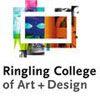
The Computer Animation BFA at Ringling College of Art and Design (RCAD) was established in 1990. Consisting of 120 credit hours of study, the program features courses taught by accomplished professionals in the field, complemented by communications with visiting artists and industry guest speakers from major studios such as DreamWorks.
Students in RCAD’s Computer Animation Program have the opportunity to complete an internship and work with area businesses on practical projects. In addition, all RCAD students participate in the school’s initiative known as INDEX (Industry Experience). Developed by in partnership with The Patterson Family Foundation, the initiative provides experiential learning opportunities through everything from internships to competitions sponsored by major brands and clients. INDEX also helps students build their portfolios and resumes.
Another degree option for individuals looking to launch a career in animation is RCAD’s Motion Design BFA. This program covers animation, design, stop motion, and sound. Motion Design students have the opportunity to collaborate on projects in teams and attend the week-long FutureProof conference. This event consists of workshops, presentations, and keynote speakers.
Ringling College of Art and Design Computer Animation students have won 17 Student Academy Awards since 1998. RCAD graduates have gone on to win a number of Oscars, they have launched successful careers at studios such as Pixar, DreamWorks, and Disney Animation Studios, and many have started their own companies and animation studios.
Ringling College of Art and Design is a private, not-for-profit college. Accredited by the National Association of Schools of Art and Design (NASAD) and the Southern Association of Colleges and Schools Commission on Colleges (SACSCOC), RCAD has been around for more than 90 years. Co-founded by circus baron, John Ringling the school serves more than 1,600 students enrolled in eleven majors leading to a BFA degree, two majors leading to a BA, and minor options in 10 areas.
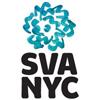
The Animation Department at School of Visual Arts (SVA) has three pathways for animators: Animation, Computer Art, and Computer Animation and Visual Effects. Leading to a BFA, all programs emphasize hands-on experience; mentors who are accomplished special effects artists, directors, and character designers; and working relationships with independent animators across New York, and alumni-owned Augenblick Studios, Plymptoons, and Titmouse. As interns and part-time employees, SVA Animation students have produced animations for non-profit organizations and public service organizations such as UNESCO, Ted-ED, and UNICEF.
Students in all BFA programs will train on the latest industry software including Maya, Adobe Animate, Storyboard Pro, After Effects, and Toon Boom Harmony. SVA Animation students will also participate in the School of Visual Arts Thesis Celebration, where their best work will be presented to industry professionals and other prominent figures in the world of art.
Graduates of the Animation, Computer Art, and Computer Animation and Visual Effects BFA programs at SVA have gone on to win awards presented by the Academy of Motion Pictures, The International Animation Festival, and the Association of International Film Animators (ASIFA). Graduates have also won awards for their short and feature films at numerous festivals around the world.
SVA Animation alumni can be found at independent animation studios worldwide and at major studios such as DreamWorks, Lucasfilm Animation, Warner Bros. Animation, Nickelodeon, Sony Pictures Animation, and Disney Animation Studios.
At the graduate level, the Computer Arts Department at School of Visual Arts has an MFA Program in Computer Arts. SVA is also known for its Continuing Education (CE) Animation courses, which are designed to help students improve their skills through hands-on exercises and workshops. CE Animation students have the opportunity to create their own shorts.
The SVA MFA Computer Arts Department was the first MFA Program in the U.S. to focus on computer art. Established in 1986, the program features workshops, guest lectures, visiting artists, and internship experiences. During the final year of the program, MFA students will complete academic research and a creative work accompanied by an artist’s statement.
Graduates of the SVA MFA in Computer Arts Program have been hired at Industrial Light & Magic (ILM), MTV, Pixar, Google, Sony Pictures Imageworks, Electronic Arts (EA), and Disney, DreamWorks. Some alumni have gone on to open their own studios or win Academy, Emmy Award, and Grammy awards.
The School of Visual Arts (SVA) opened in 1947 as the Cartoonists and Illustrators school. Classes began with just three teachers and 35 students. Today, the School of Visual Arts serves more than 4,000 students enrolled in dozens of BFA, MA, MFA, and MPS programs. SVA is accredited by the Middle States Commission on Higher Education (MSCHE), with individual program accreditation by the National Association of Schools of Art and Design (NASAD) and the Council for Interior Design Accreditation (CIDA).
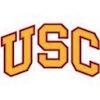
The School of Cinematic Arts (SCA) at University of California (USC) houses the John C. Hench Division of Animation + Digital Arts (Hench DADA). The Division has programs for animators at both the undergraduate and graduate levels. Options for undergraduates include an Animation + Digital Arts BFA and Minors in Animation, 3D Animation in Cinematic Arts, and Animation + Digital Arts. The Interactive Media Division offers a Minor in Game Animation.
Through electives, the 3D Animation in Cinematic Arts Minor allows students to focus in a specific area such as Character Animation, Motion Capture, Modeling, Virtual Reality, or Visual Effects. The Animation + Digital Arts Minor covers animation theory and students may create work in genres ranging from traditional animation to experimental to computer animation. The Game Animation Minor combines the teaching of systems thinking and developing animation skills. Through electives, Game Animation students may study Visual effects, Digital Effects, Game Development, and more. Minors are 16 units and all require a final project to graduate.
The Hench DADA BFA in Animation + Digital Arts consists of general education requirements, a concentration area, and several courses that must be taken from the USC Dornsife College of Letters, Arts and Sciences (Physical Education), USC Kaufman School of Dance, and USC School of Dramatic Arts.
Potential areas of concentration include Character Animation, Immersive Media, 3D Computer Animation, Experimental Animation, Motion Graphics, Interactive Animation, Visualizing Science, Documentary Animation, and Visual Effects.
During the final year of the program, BFA students will complete a Senior Project, which consists of the production and post-production of a fully rendered, animated piece—with soundtrack. Projects are presented to a committee upon completion.
At the graduate level, USC Hench DADA houses an Animation + Digital Arts MFA Program, which takes three years to complete. In addition, the School of Cinematic Arts launched a new MFA in Expanded Animation Research + Practice (XA), with classes beginning Fall 2022. Research concentrations for the XA Program include Experimental Animation, Animation for Robotics, Documentary Animation, Performance Gesture, Fine Art Animation Practice, Gesture Movement, Advanced Character Performance, Cinematic Installations, Sound Design, Narrativity, Virtual Humans and AI, and Dreams and Consciousness and Science Visualization. Of the minimum 50 units required to graduate with an XA MFA, 30 units are dedicated to Expanded Animation.
The Animation + Digital Arts MFA Program provides mini studios for all students as well as ongoing workshops in new technologies and internship opportunities. Techniques and approaches covered range from hand-drawn character animation to interactive digital animation. Course examples for the program include Expanded Animation, Animation Production, and Storytelling for Animation. Elective units are an important part of the MFA Program and include course titles such as Survey of Interactive Media, Seminar: Avant-Garde Film/Video, and World Cinema Before 1945.
Graduates of the Animation programs at the University of Southern California have been hired at major studios such as Digital Domain, Digital Idea, DreamWorks Animation, Illumination Entertainment, Industrial Light & Magic (ILM), Nickelodeon Animation Studios, Pixar, and Sony Pictures. Many USC alumni have founded their own independent studios.
Established in 1880, University of Southern California (USC) is the largest private sector employer in Los Angeles. Serving 49,500 students, USC houses 23 schools and divisions. More than 600 graduate and professional programs are offered. The University of Southern California is accredited by the Western Association of Schools and Colleges (WASC) Senior College and University Commission (WSCUC).
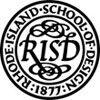
The Animation Program at Rhode Island School of Design (RISD) combines three areas: Film, Animation, and Video (FAV). Leading to a BFA, the FAV Program provides the opportunity to focus in Animation, Live Action or a combination of the two. Students may produce experimental, narrative or documentary films, as well as productions for interactive media and installations. Student works may be viewed and analyzed through film festivals and visiting artists.
Course examples for the RISD FAV BFA include Advanced Stop Motion, Animation Practices, Character Animation Workshop, Computer Animation: Integrated Techniques, Computer Generated Imagery 3-D, Digital Effects and Compositing for the Screen, Directing, Experiments in Stop Motion Animation, Intermediate Studio: Live Action or Animation, Spatial Dynamics, Stop-Motion Animation, Time, Light, and Sound, and Video Practices.
All RISD FAV students have access to animation and live action studios, studios for green screen and blackout shooting, and Apple workstations equipped with Avid, Final Cut, Pro Tools, Autodesk Maya, the Adobe Production Suite, and a variety of animation software. Collaborative study, workshops, and a professional internship are also part of the program.
During the senior year of the FAV BFA Program, students will develop, design, animate, direct, and produce an independent project. Throughout this final year, students will receive critiques and individual guidance weekly from established professionals in the world of animation. Class meetings are devoted to specialized technical workshops, film screenings, and group critique. The year culminates with the RISD Senior Festival, a public showcase. Graduates will leave the program with a professional reel and portfolio.
Graduates of the Rhode Island School of Design FAV BFA Program have gone on to create, direct and/or produce a number of animated films and series such as The Simpsons (Lance Wilder, Animator), Family Guy (Seth Macfarlane, Creator), and the Oscar-nominated animated short Feral (Daniel Sousa, Animator and Director). RISD graduates have also landed positions at DreamWorks, HBO, Pixar, Fox, and PBS or launched their own studios and production companies.
Founded in 1877, Rhode Island School of Design is one of the first art and design schools in the U.S. This private, nonprofit college serves around 2,600 students enrolled in dozens of majors and programs. RISD is accredited by the New England Commission of Higher Education (NECHE) and the National Council for State Authorization Reciprocity Agreements (NC-SARA). The Architecture, Landscape Architecture, and MA in Teaching programs have special accreditation by the National Architecture Accrediting Board, Landscape Architectural Accreditation Board, and the RI Department of Education, respectively.

The School of Art at Pratt Institute (Pratt) houses eight departments and more than 30 degree programs. The Department of Digital Arts here has a Digital Arts Program, which leads to a BFA. Also housed in the School of Art is the Graduate School of Art, which has a Digital Arts MFA Program with concentrations in 3-D Animation and Motion Arts and Interactive Arts.
The BFA program has several emphasis options: 2-D Animation, 3-D Animation and Motion Arts, and Interactive Arts. Department highlights include small class sizes, a collaborative environment, state-of-the art studios and classrooms, and courses taught by experienced artists in the field. BFA students can expect to take courses such as 3D Modeling, Coding for Animation, Compositing and Special FX, and Lighting and Rendering. Senior Project Development and Senior Projects courses are also part of the program.
Pratt MFA students will take courses such as Digital Animation Studio, Traditional Animation, and Advanced Digital Animation. Graduate Seminar I-II and Thesis I-II are also part of the program.
Pratt Institute graduates work in a wide variety of positions for major studios such as Digital Domain, Gameloft, Walt Disney Animation Studios, NBCUniversal, Industrial Light & Magic (ILM), and Sony Pictures Imageworks. Many Pratt alumni have also gone on to establish academic careers at institutions such as New York University (NYU), Rochester Institute of technology (RIT), New York Institute of Technology (NYIT), Howard University, and American Academy in Rome.
Founded in 1887, Pratt Institute was one of the nation’s first colleges to welcome students without regard to color, gender, or class. The school serves more than 5,000 students across campuses in Brooklyn, Manhattan, and Utica, New York. More than 70 degree programs are offered across six schools and The Center for Interdisciplinary Studies. Pratt Institute is accredited by the Middle States Commission on Higher Education (MSCHE).

Gnomon School of Visual Effects has several programs designed to develop studio-ready professionals. Options include a BFA or Certificate in Digital Production. A preparatory program, Foundation in Art & Design, is also available. The certificate can be completed in two years and the BFA can be completed in as few as three years. The preparatory program requires a full year of continuous study, which includes four courses per quarter. The goal of the program is to help students enhance existing skills, pursue a degree in a related field, or polish their portfolios.
Gnomon BFA students will receive training in industry software such as After Effects, Nuke, V-Ray, Photoshop, ZBrush, and Maya. Students will graduate from the BFA program with a professional demo reel that showcases their best work.
The Certificate in Digital Production has five areas of emphasized study. Options include Visual Effects Animation, Character & Creature Animation, 3D Generalist, Games, and Modeling & Texturing. Students in the program may also focus on Film, Games, or Visual Effects Production.
With a near 100% employment rate, Gnomon School of Visual Effects has alumni working at studios and gaming companies such as DreamWorks, Electronic Arts (EA), Industrial Light & Magic (ILM), Sony Pictures Imageworks, Marvel Entertainment, Nickelodeon Animation, Blizzard Entertainment, Walt Disney Animation Studios, Reel FX, and Digital Domain.
Located in Hollywood, California, Gnomon School of Visual Effects sits on a 35,000 square foot lot within the historic Television Center Studio lot. Established in 1997, Gnomon offers degree and vocational certificate programs, as well as over 100 individual 10-week courses. Gnomon School of Visual Effects is accredited by the Accrediting Commission of Career Schools and Colleges (ACCSC).

The UCLA Animation Workshop launched in 1948, making one of the oldest animation programs in the U.S. Part of the University of California Los Angeles’ (UCLA) School of Theater, Film & Television (TFT), the three-year Animation Workshop guides students through the filmmaking process from beginning to end.
Examples of required courses for the Workshop include Visual Thinking and Organization for Animation, Advanced Computer Animation Maya, Animation Design, Interactive Animation, and Writing for Animation. Other courses include Experimental Film, Animation Seminar, and Directing.
Workshop students may develop skills in specific areas of animation through electives. Examples include Writing for the Animated TV Series, Real Time Animation: Puppetry Arts, and Film and Television Sound Recording. Throughout the program, students will complete one interactive project and several films including a thesis film, traditional film, and computer film.
At the undergraduate level, UCLA has a Film and Television BA with a Concentration in Animation. Housed in the School of TFT's Department of Film, Television, and Digital Media (FTVDM), the concentration consists of 20 units of study to be completed during the student’s senior year. All students are required to complete coursework in three areas: film and television craft (writing, editing, directing, sound recording, and photography; cinema and media studies (aesthetics, theory, and history); and production (animation, digital, television, film, and experimental). An internship is also part of the program and must be completed in the students junior or senior year.
Students in the BA and MFA programs at UCLA have access to the state-of-the-art Walter Lantz Digital Animation Studio.
Graduates of the animation and film programs at the University of California Los Angeles work for Pixar, DreamWorks, Walt Disney Imagineering, Nickelodeon, and many other major studios.
Established in 1919, University of California Los Angeles has played a pivotal role in the formation of nearly 200 startup companies. Serving 45,900 students from 118 countries, UCLA offers more than 250 programs across 12 professional schools and UCLA College. University of California Los Angeles is accredited by the Western Association of Schools and Colleges (WASC) Senior College and University Commission (WSCUC).
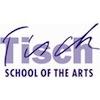
Tisch School of the Arts (Tisch) at New York University (NYU) houses the Maurice Kanbar Institute of Film & Television, which produces more than 5,000 films per year. The Institute, which produces more than 5,000 films a year, houses the Department of Animation and Digital Arts home to the Film and Television BFA with an Animation Area.
The Animation Area launched in 1980 with just five classes and 80 students, and it was the first program to bring digital technology to Kanbar. Today, the Animation Area consists of nearly twenty different courses and more than 500 students from nearly every state and dozens of countries.
The Animation Area at NYU Tisch provides instruction in 2D, 3D, and Traditional Animation. The program begins with animation fundamentals and progresses to intermediate animation, then advanced. Course examples include Experimental Animation, Life Drawing: Anatomy, Storyboarding, Visual Effects and Compositing, Action Analysis, Writing for Animation, Drawing and Design for Animation, and Motion Design & Titles.
Besides a diverse array of classes. the Animation Area at NYU Tisch highlights guest speakers such as Jeffrey Katzenberg, David Polonski, and Chris Butler, study abroad experiences, and internship opportunities.
Graduates of the Animation Area at NYU Tisch work as freelancers, many have started their own studios, and others work at major studios such as DreamWorks, Walt Disney Animation Studios, and Pixar.
New York University was founded in 1831. Serving nearly 55,000 students, NYU is one of the nation’s largest private universities. In addition to the New York campus, NYU has campuses in Abu Dhabi and Shanghai, along with 11 global academic centers in Asia, Europe, Africa, North America, and South America. With an estimated 400+ programs, New York University is accredited by the Middle States Commission on Higher Education (MSCHE).
Founded in 1965, Tisch School of Arts at New York University serves more than 4,000 students from 48 states and 39 countries. Programs are offered at all degree levels through Maurice Kanbar Institute of Film & Television, the Institute of Performing Arts, and the Institute of Emerging Media.
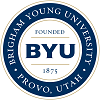
The Animation BFA is a 62.5-64.5 credit hour limited enrollment program (75 students) that explores animation, film production, storyboarding, special effects, video game production, illustration, screenwriting, and more. The Computer Science: Animation and Games BS is also a limited enrollment program that accepts just 42 students per enrollment period. Consisting of 77-80.5 credit hours, the program explores animation, computer graphics, video game production, programming, software engineering, visual effects, user interfaces, and more.
The BYU Center for Animation provides extensive hands-on training in animation, games, live-action, and special effects. All BFA, BS, and BYU Center for Animation students have opportunities to work on personal projects, group projects, and major films. Students will have the opportunity to complete an internship, study abroad, and develop a portfolio of their best work.
BYU Animation and Animation and Games graduates go on to establish successful careers at studios such as Blizzard, DreamWorks, Disney, Sony, Digital Domain, Pixar, Industrial Light & Magic (ILM), Nickelodeon, Riot Games, and many others.
Brigham Young University was founded as Brigham Young Academy (BYA) in 1875 by Church of Jesus Christ of Latter-day Saints President Brigham Young. With more than 35,000 students enrolled in nearly 400 degree programs and minors, BYU is the one of the largest private universities in the U.S. Brigham Young University is accredited by the Northwest Commission on Colleges and Universities (NWCCU).

ArtCenter College of Design (ArtCenter) houses an Entertainment Design Program with three tracks: Animation, Concept, and Game Design. Programs lead to a BS.
The Entertainment Design BS with an Animation Track explores lighting, character animation, modeling, storyboarding, and art direction. Course examples for the program include 2D Fundamentals, 2D Mechanics, Concept Art, Shorts, Design History of Comic Animation, CG Mechanics, Storyboard, Science & Technology, and Entertainment Design Industry.
BS students will complete one of three business courses (Business 101, Business, or Entrepreneurship), or Professional Practices as well as three Capstone Production courses and a 5th Term Portfolio Review. The Entertainment Design BS with an Animation Track requires 132 units to graduate.
ArtCenter College of Design graduates are prepared for positions within the entertainment industry such as Animator, Modeler, Digital Artist, Production Designer, and Storyboard Artist. ArtCenter graduates have been hired at Amazon, DreamWorks Animation, Cartoon Network, Google, Netflix, Paramount, Marvel, Rockstar Games, Ogilvy, Sony Pictures Animation, and Universal Creative, among others.
ArtCenter College of Design serves around 2,320 students from more than 50 countries. Founded in 1930, ArtCenter has campuses in Pasadena and Los Angeles, California, and satellite studios in Petersen Automotive Museum (Miracle Mile, Los Angeles) and Berlin, Germany. ArtCenter offers 11 undergraduate programs, seven graduate degree programs leading to an MFA or MS, a joint MS/MBA program, and undergraduate minors for Business, Creative Writing, and Social Innovation students.
ArtCenter College of Design is fully accredited by the Western Association of Schools and Colleges (WASC) Senior College and University Commission (WSCUC) and the National Association of Schools of Art and Design (NASAD).

The College of Art and Design at Rochester Institute of Technology (RIT) houses the School of Film and Animation, home to the Animation Program. Several degree options are available including BFA and MFA degrees in Film and Animation, BFA degrees in Film and Animation with either an Animation Option or a Production Option, and a BS in Motion Picture Science.
The MFA has four options: 2D Animation, 3D Animation, Production, and Screenwriting. The BS program requires coursework in film, television, and animation production. In the Film BFA Animation Option, the focus is 2D and 3D Animation, production, screenwriting, and stop-motion animation. Three tracks are available including 2D, 3D and Stop Motion Animation. Students learn to animate for AR/VR, digital and visual effects, games, and films. Course examples across all programs include After Effects for Animators, Programming for 3D Animators, Production Processes, Experimental Animation, Virtual Production, Digital Effects & Compositing, World Building Workshop, and Directing.
Production Option BFA students will learn to produce documentary, fiction, experimental, and live-action films. Students will gain hands-on experience working with cameras, and editing and sound equipment. All Production Option students will have the opportunity to participate in RIT’s Study Away: LA Program. Students that choose to participate in the program will spend a semester in Los Angeles where they can intern at top studios and entertainment companies, and take two courses to complement the study-away experience.
RIT also has one of the fourth-oldest and one of the largest cooperative (co-op) education programs in the world. As such, all RIT programs provide co-op education opportunities as well as internships and other experiential learning opportunities. RIT animation students also have access to 52,000 square foot MAGIC Spell Studios, and labs and classrooms outfitted with industry standard technology and software.
At all levels, animation students will participate in the RIT’s Creative Industry Day, where they will have the opportunity to mingle with representatives of studios, design firms, and other creative companies.
Graduates of Rochester Institute of Technology work in a wide variety of positions at major studios such as Lucasfilm, Electronic Arts (EA), Dolby, Nickelodeon, Sony, DreamWorks, Industrial Light & Magic (ILM), and Disney Animation Studios.
Rochester Institute of Technology is a top research university that dates back to 1829. With global campuses in China, Croatia, Dubai, and Kosovo, the school serves more than 19,000 students, making it one of the largest private universities in the U.S. RIT offers more than 200 academic programs across 11 colleges and institutes. Rochester Institute of Technology is accredited by the Middle States Commission on Higher Education (MSCHE).

Full Sail University’s (Full Sail) Computer Animation Program has online and on-campus options. Leading to a BS, the distance learning option takes 29 months to complete, while the campus option takes just 20 months to complete. Students in both programs will learn how to navigate the same production pipeline used in today’s major studios. Course examples include 3D Animation I-II, Visual Development, Industry Production, Technical Animation, and Character Rigging.
All Full Sail animation students are required to take two professional development seminar courses and seven project and portfolio courses covering 3D arts and computer animation. Professional development courses provide the opportunity for students to explore the computer animation industry, while learning to build their personal brand. Professional development courses are enhanced by industry guest speakers. Project and portfolio courses highlight hands-on, project-based learning, independent study, and portfolio development.
Full Sail University graduates have been credited on more than 45 Grammy-nominated projects; 2022 blockbusters such as Top Gun: Maverick, Thor: Love and Thunder, Lightyear, Jurassic World: Dominion, and Minions: The Rise of Gru; and other productions and series such Ms. Marvel, Stranger Things 4, and Obi-Wan Kenobi.
Full Sail University offers graduate certificates and programs at all degree levels in the Arts, Entertainment, Media, and Technology. The school, which opened in 1979 in Dayton, Ohio, is located just 35 minutes from downtown Orlando and Universal Studios. Serving approximately 21,000 students, Full Sail is accredited by the Accrediting Commission of Career Schools and Colleges (ACCSC).

The School of Animation & Visual Effects (VFX) at Academy of Art University (Academy of Art) has an Animation Program with five pathways for artists seeking a career in animation. Options include a certificate and AA, BFA, MA, and MFA degrees in Animation & Visual Effects.
The certificate is a top choice for students who would like to dive into animation coursework from day one. In addition to skipping liberal arts coursework, this 120-unit program allows students to complete an internship, a study abroad experience, and a senior portfolio in Animation and VFX.
Consisting of 66 units of study, the Animation & VFX AA explores 3D animation, 3D modeling, 2D animation and stop motion, storyboarding, and VFX through required coursework and electives. Students in the 132-unit Animation & VFX BFA have the opportunity to focus in one primary area of emphasis. Options include VFX, 2D animation and stop motion, 3D modeling, 3D animation, and storyboarding.
The Animation & VFX MA focuses on storytelling and technical skills. Students in this 36-unit graduate program will work in work in 2D Animation & Stop Motion, 3D Animation, 3D Modeling, or VFX. Consisting of 63 units of study, the Animation & VFX MFA Program explores all areas of animation and visual effects from concept to post-production. Students in this program will also develop communication and management skills. A thesis is required to graduate.
All Academy of Art Animation programs take place in a studio production environment known as StudioX. The School of Animation & VFX is the only school of its kind to teach in this type of environment. Because StudioX mimics most real-world studios, students gain hands-on experience with industry standard equipment, collaborating with other artists and on teams, and managing a production from start to finish.
In addition to several collaborative projects, all degree-seeking students will complete an internship and create a professional portfolio of their best work.
Academy of Art Animation alumni goon to establish careers at major studios and companies such as Google, LAIKA Studios, Walt Disney Animation Studios, Marvel, Sony Pictures Animation, CASA VFX, Sony Pictures Imageworks, Riot Games, Weta Digital, and Industrial Light & Magic (ILM).
Academy of Art University is a family-owned private university located in San Francisco—one of the world’s top cities for animation careers. Established in 1929 and serving more than 7,000 students, Academy of Art is of the nation’s largest private art and design schools. Divided into 22 schools, Academy of Art University offers more than 129 degree programs in 40+ areas of study. Programs lead to the AA, BA, BFA, BS, B. Arch, MAT, MA, MFA and M. Arch degrees.
The Academy is accredited by Western Association of Schools and Colleges (WASC) Senior College and University Commission (WSCUC).

Jarvis College of Computing and Digital Media at DePaul University (DePaul) houses the School of Cinematic Arts, home to the Animation Program. Listed as a Top Film School by Variety and The Hollywood Reporter, the School of Cinematic Arts features courses taught by award-winning filmmakers access to a state-of-the-art, 32,000 square foot production facility known as DePaul Cinespace Studios, and seven degree options for animators including the Animation BA, BFA, MA, MFA, BA/MA, and BFA/MA, and the Computer Science (CS) + Animation (CS+ANI) with an Animation Technical Director (TD) Concentration. An Animation TD Minor is also available.
In addition to award-winning filmmakers, courses for the animation programs at DePaul are taught by one of the largest full-time animation faculties in the nation. They teach courses such as 3D Animation Production, Cinema, Animation and Art, Screenwriting, Motion Graphics, 3D Design and Modeling, Stop-Motion Animation, Narrative Development, Storyboarding, Drawing, and Motion Capture.
The BFA program has concentrations in 3D Animation, Visual Effects Animation, Cinema, Game Art, Motion Graphics, and Storyboarding and Character Design. While the BA does not offer a concentration, animation students may enhance their skills in a focused areas through major and open electives.
The MA allows students to concentrate in 3D Animation, Motion Graphics, Storyboarding and Character Design, Technical Artist or Traditional Animation. Course examples for the program include Advanced Topics in Visual Effects, Animation Figure Study, Topics in 3D Animation, Game Art Pipeline, and 3D Animation Production.
The Animation MFA follows the project model. Students will spend their time creating a single project with the assistance of an MFA co-chair and MFA faculty mentors. The program is designed for animators who have earned an undergraduate degree in the visual arts. Examples include Animation, Art, Illustration, Graphic Design, and Film.
The multidisciplinary CS+ANI is designed for students seeking technical artistic roles in animation and game development. In addition to the Concentration in Animation TD, the program offers a Concentration in Game Art TD. Course examples for the program include Motion Graphics Foundations, 3D Design and Modeling, 3D Animation, Optimized C++, Animation Production, Advanced 3D Rigging, Concepts of Programming Languages, and Game Art Pipeline. Students in the CS+ANI benefit from interdisciplinary collaborative group project experiences with teams of students majoring in 3D animation, game art, storyboarding and character design, game design, and game programming.
All DePaul Animation students may participate in the Los Angeles Quarter Program. This 10-week immersion program allows students to intern at major Hollywood studios such Disney, DreamWorks Animation, Sony Studios, Nickelodeon, The Jim Henson Company, Titmouse Animation, Bix Pix Animation, Warner Brothers, and many others.
Other program benefits include the visiting artist series, where past guests have included artists from Disney and Pixar, access to the Animation Lodge, and participation in Project Bluelight. Students at The Lodge collaborate on group projects, network, and build their portfolios. Bluelight provides hands-on experience in motion picture production to all interested students.
Graduates of the Animation Programs at DePaul University have been hired by major studios and gaming companies such as Electronic Arts (EA), Google, Cartoon Network, Nickelodeon, Blizzard Entertainment, DreamWorks Animation, LAIKA Studios, Disney Animation Studios, Wargaming, Warner Bros. Animation, BioWare, and Iron Galaxy Studios.
DePaul University provides exceptional academics and real-world experiences to prepare students for a changing world. With nearly 21,000 students across more than 300 academic programs, DePaul has two campus locations in Chicago. Students richly benefit from the city’s many opportunities. In turn, DePaul is one of the forces that shapes Chicago’s future. The university was founded in 1898 by the Congregation of the Mission (Vincentians), a Roman Catholic religious community dedicated to following the ideals of St. Vincent de Paul. DePaul is among the nation’s top universities for diversity because of its long tradition of providing a high-quality education to students from a broad range of backgrounds. DePaul is one of the largest private, nonprofit universities in the Midwest and one of the largest Catholic universities in the nation.
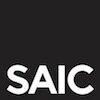
The Film, Video, New Media, and Animation Department (FVNMA) at the School of the Art Institute of Chicago (SAIC) has a Studio Program that offers a Post-Baccalaureate Certificate and BFA and MFA degrees in Studio. The BFA has Liberal Arts or Visual Critical Studies Thesis Options and all programs offer extensive coursework in animation. Course examples across pathways include Puppet Animation, 3D Character Animation, Sonic and Optics, Type and Image in Motion, Advanced Experimental 3D, Advanced Drawing for Animation, Motion Graphics and Visual Effects, Advanced Screenwriting, Writing and Art Direction for Animation, Visualization and Storyboarding.
Other FVNMA Department highlights include interaction with visiting artists; access to state-of-the-art film, editing, and production equipment, the Art Institute of Chicago Museum, and on-campus galleries; and graduate seminars, screenings, and performances. In addition, FVNMA MFA students have the opportunity to participate in Critique Week. This week-long event takes place each semester. The entire faculty, along with invited visiting artists and designers, form panels designed to critique students work. All classes are suspended during this time.
Graduates of SAIC’s FVNMA Department are prepared to seek careers in animation, film, games, digital media, and more.
Founded in 1866 by a group of 35 artists, the School of the Art Institute of Chicago is one of the nation’s oldest accredited independent schools of art and design. Serving more than 3,500 students, SAIC offers over 50 areas of study in 24 academic departments. The School of the Art Institute of Chicago is accredited by the Higher Learning Commission (HLC). Since 1948, the school has been accredited as a charter member by the National Association of Schools of Art and Design (NASAD).
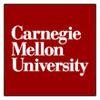
Carnegie Mellon University’s (CMU) College of Fine Art (CFA) houses the School of Art. Serving around 200 students, CMU School of Art has an interdisciplinary program that explores animation, bioArt, game arts, computational and interactive arts, video, and other related areas. Leading to a BFA in Electronic & Time-Based Media (BFA ETB), the program features advanced courses such as Animation, Art & Technology, Digital Storytelling and Resistance, Experimental Capture, and Visual Music.
Carnegie Mellon University is also home to the Integrative Design, Arts and Technology Network (IDeATe). In collaboration with the School of Computer Sciences’ Robotics Institute (est. 1979), the IDeATe network manages eight undergraduate areas that can be taken as minors. This includes Animation & Special Effects.
Courses for the Animation & Special Effects Minor are led by faculty with expertise in Art and Robotics. Course examples include Animation, Art, and Technology, Art of Robotic Special Effects, Computational Photography, Advanced ETB: Video: Experimental Science Fiction, Technical Character Animation, and IDeATe: Introduction to 3D Animation Pipeline. IDeATe Animation & Special Effects course are open to all students. This provides opportunities for animation minors to collaborate with students from game design, film, digital media, and more.
Graduates of the ETB and Animation & Special Effects Programs have gone on to establish successful careers at major studios, networks, and gaming companies such as Sony Interactive Entertainment, Walt Disney Studios, Warner Interactive, Zynga Games, Comedy Central, DreamWorks Animation, Electronic Arts (EA), MTV, Paramount, and Blizzard Entertainment.
Founded in 1900 by industrialist and philanthropist Andrew Carnegie, Carnegie Mellon University began as Carnegie Technical Schools. Today, the school serves around 15,800 students enrolled in more than 200 programs across seven colleges and schools. CMU also has more than a dozen degree-granting locations, and over 20 research partnerships in Silicon Valley, Australia, Africa, and Qatar. A private, global research university, Carnegie Mellon University is accredited by the Middle States Commission on Higher Education (MSCHE).

The School of Performance, Visualization & Fine Arts at Texas A&M University (TAMU) houses the Visualization Program has three degree pathways for animators including the BS, MS, and MFA in Visualization. The Visualization MFA is one of a few programs of its kind in the U.S. and possibly the only one in the state of Texas.
Established in 1989 the TAMU Visualization Program is cross-disciplinary, allowing students to explore interaction, art, design, visualization, and computer graphics. Students at all levels may focus in an area of emphasis. Options for BS students include Animation and Virtual Production, Media Art, Interactive Design, Game Creation, and Visual Computing.
MS students may focus in areas such as Computer Animation, Interactive Design, Gaming, Virtual Reality or Computer Graphics, to name a few. Examples of emphasis areas for MFA students include Computer Animation, Visual Storytelling, Visual Effects, Virtual/Augmented Reality (VR/AR), Interactive Art, and Gaming.
Students in all programs have the opportunity to participate in the Annual Career Fair, the Semester Away Program in Italy, Germany, and other countries, and the TAMU Internship Program. The supervised undergraduate internship spans 15 weeks and 600 hours, and students earn six credit hours. Graduate internships are worth eight credits. TAMU Visualization students have completed internships at animation, game, and graphic design companies.
Texas A&M University Visualization graduates will leave the program with a polished portfolio of their best work. Program alumni are routinely hired for positions at major studios. Examples include DreamWorks Animation, Pixar, Industrial Light & Magic (ILM), Walt Disney Animation Studios, and Reel FX Animation Studios.
With more than 73,000 students, Texas A&M University is one of the nation’s largest universities by enrollment. Established in 1876, TAMU is also Texas’s first public institution of higher learning. Texas A&M houses 17 colleges and schools that provide more than 400 degree programs. Texas A&M University is accredited by the Southern Association of Colleges and Schools Commission on Colleges (SACSCOC).

The Animation BFA at California College of the Arts (CCA) is the school’s largest major. Housed in the Animation Department, the program provides hands-on learning in state-of-the art studios and labs such as the Foley Room, Hybrid Lab, Sound Studio, and Founder 309. In the classroom and labs, Animation BFA students will learn to create 2D and 3D animation, sound effects, animation for games, stop-motion animation, and more.
Courses for the BFA program are taught by instructors who are working in the industry with studios such as Pixar, DreamWorks, and Tippett Studio. Course examples include 3D Computer Animation, Drawing for Animation, Animation 1 and 2, Workshop: Experimental Animation, Visual Storytelling, Sound for Animation, Acting for Animation, and Writing 1 and 2. During the third year of study, CCA animation students will complete Junior Project 1 and 2. In the final year of the program, students will complete Senior Project 1: Pre-production and Senior Project 2: Production.
Upon completion of the Animation BFA Program, graduates will have a portfolio of their best work. CCA Animation alumni have gone on to establish successful freelance careers or launch their own studios. CCA graduates have also been hired at studios and gaming companies such as Sony Pictures Animation, Nickelodeon Animation Studios, Electronic Arts (EA), Walt Disney Feature Animation, Pixar, Cartoon Network, DreamWorks Animation, Phosphor Games, Bento Box Entertainment, and many others.
California College of the Arts began in 1907 as the School of the California Guild of Arts and Crafts. When it opened, the school had just three teachers and 43 students. Today, 420 faculty members serve more than 1,600 students enrolled in over 40 undergraduate, graduate, minor, and dual degree programs. California College of the Arts is accredited by the Western Association of Schools and Colleges (WASC) Senior College and University Commission (WSCUC), the National Association of Schools of Art and Design (NASAD), and the National Architectural Accrediting Board (NAAB).

Otis College of Art and Design (OTIS) has two pathways to becoming an animator: the Animation BFA and the Animation Certificate. The BFA explores 3D modeling, storyboarding, animation, character design, rendering and sound. Students will gain experience in 2D and 3D computer animation, 3D production, and visual development, as well as software such as Houdini, Maya, ToonBoom, Unreal, Nuke, Adobe Suite, Zbrush, and Cinema 4D. All BFA students will complete key projects including Animation Explorations, Animation Studio Project I & II, and Animation Senior Project I & II.
The Animation Certificate Program is provided through the Otis College of Art and Design Extension Center. Consisting of 16 required courses and two elective courses, the Certificate Program explores character creation, story development, visual effects, animated graphics, and creating environments. Course examples include 2D and 3D Animation, Digital Drawing: Illustrator, Digital Tools: Maya, Drawing and Composition, Storyboarding for Film and Animation, Digital Storytelling, and 2D Design.
The Animation Certificate concludes with the Final Portfolio: Digital Media Arts. Students can complete the program in 1.5 to 2 years.
Graduates of the Animation Programs at OTIS have gone on to secure positions at major studios such as Industrial Light & Magic (ILM), DreamWorks Animation, Nickelodeon, Disney, and Pixar Animation Studios, among others. OTIS Animation alumni are 3D Animators, Animation Designers, Game Designers, Junior Character Animators, Layout Artists, 2D/3D CG Artists, Cinematic Animators, Previz Artists, Production Coordinators, and Storyboard Artists, among others.
Established in 1918, Otis College of Art and Design is Los Angeles’ oldest professional school of the arts. This private, non-profit college serves more than 1,200 students enrolled in 11 BFA and MFA degree programs in the Fine Arts, Graphic Design, Public Practice, and Writing. A variety of minors and certificate programs are also available. Programs and courses at OTIS are led by more than 430 professors—all active professionals in their respective fields.
Otis College of Art and Design is accredited by the Western Association of Schools and Colleges (WASC) Senior College and University Commission (WSCUC). The school is also a member of the Association of Independent Colleges of Art and Design (AICAD).

The College of Arts and Sciences at The Ohio State University (OSU) houses 38 departments, more than 20 research centers, and over 2,000 faculty and staff members that provide more than 80 majors, 100+ minors and certificates, and over 50 graduate programs. Among the College’s programs are several pathways to study animation.
Established in 2017, OSU’s interdisciplinary Moving Image Production (MIP) BA Program is a collaboration between The Departments of Theatre, Film, and Media Arts; Art; Design; and the Advanced Computing Center for the Arts and Design (ACCAD).
The program, which combines live-action and animated filmmaking, features studio practice in Animation, Experimental, Narrative, and Documentary. Course examples include Motion Studies Through Hand-Drawn Animation, Computer Animation: Form, Light, Motion I & II Group Studies in Digital Animation and Interactive Media, Concept Development for Time-Based Media, and Film/Video: Topics in Technologies and Strategies.
OSU MIP students will take a 15 credit hour Film Studies Minor as part of the program, and they will have opportunities to take additional production and screenwriting courses through electives, complete an internship, and participate in the school’s study abroad program.
The Department of Art houses the Art and Technology Area. Undergraduate students in this interdisciplinary emphasis area will explore everything from 3D modeling and animation to electronics/robotics/animatronics. Area course examples include Computer Animation, Moving Image Art, Digital Imaging, Art & Technology Studio Practice, Video Art, New Media Robotics, Internet Art, and Graphic Novel – Web Comic Production.
Graduate Art and Technology students will engage in project-based learning, while creating 3D animations, virtual reality, sound, interactive installations, and more. The undergraduate program leads to a BFA and the graduate program leads to an MFA.
The Department of Design has a Digital Animation and Interactive Media Track, within the MFA Program. Students will complete 60 credit hours of study in design over three years including Exploration (year 1), Practice and Application (year 2), and Synthesis (year 3).
Graduates of the MIP, Art and Technology, and Digital Animation Programs at OSU are Animators, Art Directors, Interaction Designers, Virtual Reality Designers, Multimedia Designers, Human-Computer Interaction (HCI) Designers, Game Designers, Motion Graphics Designers, Mixed Reality Designers, User Interface/User Experience (UI/UX) Designers, Freelance Artists, and College Professors.
The Ohio State University was established in 1870 as Ohio Agricultural and Mechanical College. The school serves close to 67,800 students across six regional campuses including Columbus (main), Lima, Mansfield, Marion, Newark, and OSU’s Agricultural Technical Institute in Wooster. More than 200 majors, minors, and specializations are offered in 18 colleges and schools. The Ohio State University is accredited by the Higher Learning Commission (HLC).

The College of Arts and Humanities at the University of Central Florida (UCF) houses the School of Visual Arts & Design (SVAD), home to the Emerging Media Program. Degree options for animators are available at both the undergraduate and graduate levels. The Emerging Media BFA has Character Animation and Experimental Animation Tracks and the MFA has an Animation & Visual Effects Track.
Character Animation and Experimental Animation are portfolio-based, highly competitive tracks that takes two years to complete, full-time. Students in the program benefit from courses taught by industry professionals; courses in multiple areas such as storytelling, technology, art, and design; access to state-of-the-art production labs; a studio-environment that mirrors today’s professional studios; faculty mentors; and internship opportunities.
Course examples for the Character Animation Track include Digital Effects and Compositing, Visual Storytelling and Visual Development, Digital Production in Artificial Environments, Advanced 3D Animation, New Imagery in Motion Workshop, 3D Textures, and Character Animation Portfolio Review.
Course examples for the Experimental Animation Track include Advanced Experimental Animation, Experimental Animation Professional Practice, Experimental Animation Workshop, and Experimental Animation Portfolio. Students in this Track will also complete the BFA thesis project and exhibition/screening.
Both BFA Tracks allow students to work their way through the production pipeline from story creation to film completion.
The Emerging Media MFA: Animation & Visual Effects Track focuses on narrative film structure and the entrepreneurial aspects of animation as it relates to independent filmmaking, job creation, and studio employment. Program benefits include co-directing opportunities; access to state-of-the-art labs and studios; and the opportunity to create an animation and/or visual effects thesis using techniques such as stop motion, 2D and 3D computer animation, and traditional hand-drawn. This competitive program requires 60 credit hours of study, completed over three years, full-time.
Graduates of the UCF SVAD Emerging Media Programs are Animators, Effects Artists, Story Artists, Modelers, Visual Development Artists, Lighting Artists, Riggers, Technical Artists, and Texture Artists. Program alumni are employed with major studios and gaming companies such as Pixar, DreamWorks, Disney, and Electronic Arts (EA).
The College of Sciences at University of Central Florida has an additional option for animators seeking a MS degree. Housed within the College of Sciences is Nichols School of Communication & Media—home to Florida Interactive Entertainment Academy (FIEA). Established in partnership with the city of Orlando, the state of Florida, and UCF, FIEA enrolls more than 130 students annually.
UCF FIEA has an MS in Interactive Entertainment that provides the opportunity for students to work in production teams mentored by industry professionals who provide instruction in 3D animation and modeling, game design, technical art, motion capture, creative collaboration, software engineering, and more. The program requires 30 credits including 12 credit hours of core courses, nine credit hours in a specialization, a practicum, and a capstone experience. An internship is also part of the program.
University of Central Florida FIEA graduates have been hired at studios and gaming companies such as Blizzard Entertainment, Marvel, Sony, Gameloft, Nintendo, Electronic Arts (EA), Walt Disney Imagineering, DreamWorks, Universal, Google, Microsoft Studios, Industrial Light & Magic (ILM), Zynga, and many others.
University of Central Florida opened in 1968 as Florida Technological University. On the first day of classes, the school had less than 2,000 students. Today, UCF serves around 70,400 students, making it the largest university by enrollment in the state of Florida, and one of the nation’s largest universities. The school provides 240 bachelor’s degrees, 214 master’s degrees, and 81 doctorate degrees across 13 colleges. University of Central Florida is accredited by the Southern Association of Colleges and Schools Commission on Colleges (SACSCOC).

San Jose State University (SJSU) houses the College of Humanities and the Arts, home to the Departments of Design and Art and Art History. The Department of Design has three degree options for animators including a BFA in Animation/Illustration (A/I BFA), a BA in Design Studies Specializing in A/I, and a Master of Design (MDes) with a Specialization in Animation. The Department of Art and Art History has a Digital Media Art (DMA) MFA Program, provided in partnership with SJSU’s Computers in Art, Design, Research, and Education (CADRE) Laboratory for New Media.
The multidisciplinary MFA explores areas from computer graphics and interactivity to computer games. Students in this program have the opportunity to create an area of focus through 24 units of required electives. In addition, students may choose three units of specialized study in any area of art.
Other program benefits include exclusive 24/7 access to lab facilities, collaborative art and technology projects, and internship opportunities throughout Silicon Valley. Consisting of 60 units of study, the DMA MFA culminates with the MFA Project worth three units.
The SJSU A/I BFA is a professional degree that covers 3D and traditional animation. Students in this program may specialize in Animation or Visual Development. Specializations are 21 units, including 12 units of approved electives. Course examples across specializations include Animation Production – Storyboarding, Digital Animation I-II, Visual Development I-II, and Digital Modeling I-II. Students in both areas must pass a milestone portfolio review and complete a six-unit capstone—Senior Seminar Animation/Illustration.
The SJSU Design Studies BA with A/I is a liberal arts degree that allows students to explore animation and film, as well as photography, design, and theater arts. Both the BA and BFA programs provide professional internship opportunities.
San Jose State University’s MDes with a Specialization in Animation focuses on current, experimental, and emerging professional practices. Comparable to an MFA, the MDes features technical courses such as CG Animation, Building Interactivity in Animation and Games, Lighting and Rendering. An additional program benefit is SJSU’s partnership with industry professionals who provide mentoring as students work on their portfolio and final projects.
Students in all programs benefit from access to state-of-the-art studios, courses taught by industry professionals, and guest speakers from major studios such as Industrial Light & Magic (ILM), Nickelodeon, Disney, Sony Pictures Animation, DreamWorks, Blizzard Entertainment, Pixar, Cartoon Network, Hallmark, Warner Bros. Animation, and many others.
Graduates of the A/I and Design Studies Programs at SJSU have been hired at more than 135 studios and colleges. Examples include Disney Interactive, Cartoon Network, Cogswell Institute, Sony Pictures, Blizzard Entertainment, Lucasfilm Animation, Animation Mentor, NBCUniversal Studios, Nickelodeon, Pixar, Zynga, and 20th Century Fox.
San Jose State University was established in 1857. Located in the center of Silicon Valley, SJSU serves approximately 36,000 students, offers 250 areas of study at the bachelor’s, master’s, and doctoral levels. Programs at SJSU are offered across nine colleges that house dozens of departments and schools. San Jose State University is accredited by the Council for Higher Education Accreditation (CHEA).

The Animation Department at Massachusetts College of Art and Design (MassArt) houses more than 20 classrooms, studios, and labs dedicated to animation. The Animation Program, which leads to a BFA, begins with the foundation year, which consists of courses such as Time, Form Study, Drawing Projects, Studio for Drawing, and Visual Language. During the second year of the program, students are introduced to animation basics, experimental animation, and digital 2D animation. Color & media, figure, liberal arts, and history of art courses are also explored during the second year.
Course examples for the program include Stop-Motion Animation, Puppet Animation & Fabrication, Drawing for Animators, VFX Alchemy: Pixels & Grain, 3DCG Character Animation, Motion Graphics, Figurative Clay Construction, and Advanced 3D Digital Animation.
In the third and fourth years of the MassArt Animation BFA Program, students will focus primarily on advanced animation coursework, the animation portfolio, and the final animation project, while continuing to complete liberal arts and art history coursework. An internship is also available.
Graduates of the MassArt Animation BFA Program are prepared to pursue a wide range of positions in the film and animation industries, digital art, advertising and marketing, design, and many other industries.
Founded in 1873 as Massachusetts Normal School, Massachusetts College of Art and Design is the nation’s first and only public college of art and design. The school serves around 1,800 students enrolled 40 degree, minor, and certificate programs. More than 150 continuing education students are enrolled in more than 100 classes and workshops in all areas of art and design.
Massachusetts College of Art and Design is accredited by the New England Commission of Higher Education (NECHE). The school is also an accredited institutional member of the National Association of Schools of Art and Design (NASAD).

The School of Media Arts at Columbia College Chicago (Columbia) houses the Interactive Arts and Media Department (IAM), home to the Animation Program. Students in the program have access to state-of-the-art animation production spaces including Cintiq, stop-motion, and traditional animation labs, as well as the Equipment Cave, Game Lab, Sound Studio, and Open Lab. IAM program options include a BA in Animation, and BFA degrees in Computer Animation or Traditional Animation.
An Animation Minor that explores object, stop-motion, and hand-drawn animation is also available. Students in this program will use industry-standard editing and storyboarding software to create a story reel for a final project. All IAM Animation Programs provide the opportunity to begin animating in the very first year.
Course examples across programs include Alternative Strategies in Animation, Computer Animation: Keyframing, Environmental Design & Modeling, Animation for Comics, Stop-Motion Animation, Animation Maquettes, Character Design and Modeling, CVFX: Compositing, Advanced 3D Digital Sculpting, Character Design and Modeling, Cartooning, Acting for Animators, and Screenwriting: Writing the Short Film.
Select BFA students will have the opportunity to participate in the Animation Studios in LA Program. This one credit course provides allows students to explore career opportunities at major Hollywood animation studios. Events include tours, portfolio reviews, and employment screenings. Participating studios have included DreamWorks, Nickelodeon, Disney, Cartoon Network, and Warner Bros.
As a senior, BFA students will produce an animated film as a solo project, serving as producer, editor, and director. Films will be presented at Manifest—Columbia Colleges annual art festival showcasing graduating students work.
Animation BA students will have the option to work with a team or individually to create a film during the final year of the program. BA students will also spend the final year fine tuning their demo reels.
Graduates of the Animation Programs at Columbia College Chicago have launched their own studios, they have gone on to win Oscars and Emmy Awards, and some alumni have worked on films and series such as The Lion King, Robot Chicken, Brave, Frozen, Pocahontas, UP, The Lego Batman Movie, Coco, and Finding Dory. Columbia College graduates have been hired at networks and studios such as Disney, Warner Bros. Animation, Nickelodeon, Pixar, DreamWorks Studios, Cartoon Network, and Weta Digital.

The School of Arts, Humanities, and Technology (AHT) at University of Texas at Dallas (UT Dallas) has four degree options including the BA, MA, MFA, and PhD in Arts, Technology, and Emerging Communication (ATEC). A concentration in Animation and Games (A&G) is available for ATEC BA students. ATEC coursework for this option explores computer animation, motion graphics, game studies, user experience/user interface UX/UI design, and digital fabrication.
Required A&G courses include Computer Animation, Modeling and Texturing, Lighting and Composition, Rigging, Game Design, and Level Design. Students will complete 30 semester credit hours of required electives as well. Examples include Animation Lab, Procedural Animation, Motion Capture Animation. Virtual Environments, Animation Studies, Game Production Lab, and Project Management for ATEC.
ATEC MFA students may specialize in Animation, while MA and PhD students may focus their studies and research in animation, games, science and technology, or other areas. All graduate level programs provide advanced study in computer-based arts, interactive media, digital media, technology, and professional practices.
Other ATEC program highlights include guest speakers from major studios such as Disney, Pixar, and DreamWorks; applied and experimental research in collaboration with instructors in varying areas of expertise; seminars and lectures presented by industry professionals; and portfolio and project-based exercises.
ATEC students have access to the following labs and studios: 3D Studio, ArtSciLab, Creative Automata Lab, Cultural Science Lab, Emerging Gizmology Lab, Fashioning Circuits, LabSynthE, Narrative Systems Research Lab, Public Interactives Research Lab (PIRL), SP&CE Media, and The Studio for Mediating Play. Students focusing in animation also have access to the ATEC Animation Lab, which provides the opportunity to participate in a simulated animated studio experience. Over two semesters, a crew of 40 students will write, design, direct, and produce a two-minute CG animated short film. Just a few past films include Bad Timing (2022), Octo Ninja (2021), Night Shift (2020), and Stargazer (2019).
Graduates of the ATEC programs at UT Dallas are prepared to seek careers in 3D computer animation, film and television, games, modeling and simulation, virtual environments, and medical and scientific visualization.
University of Texas at Dallas opened in the 1960s as the Graduate Research Center of the Southwest. Established by the owners of Texas Instruments, UT Dallas is an official member of the University of Texas System. The school serves 31,570 students enrolled in more than 140 degree programs across eight schools. University of Texas at Dallas is accredited by the Southern Association of Colleges and Schools Commission on Colleges (SACSCOC).
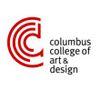
The Animation Program at Columbus College of Art & Design (CCAD) was established in 1987. Recognized as a Center of Excellence by Toon Boom, the Program has BFA and Minor options. Students in both programs have unlimited access to CCAD’s Cloyd Family Animation Center, which houses state-of-the-art stop-motion, virtual reality drawing, computer and teaching labs. The Center also houses flex spaces, a student lounge, and the Animation Student Collective.
CCAD Animation students have the option to add concentration or one of 18 minors to the program. Just a few concentrations include Animation/Experimental, Animation/Game Design, Illustration/Entertainment Design/Drawing, Illustration/Illustrative Design, and Illustration/Entertainment Design/Modeling. Minors that complement the program include Animation 2D or 3D, Comics & Narrative Practice, Film & Video, Illustration, Advertising & Graphic Design, Creative Writing, Photography, and Fine Art. Concentrations require nine hours of credit hours of coursework and minors require 15 credit hours.
Students with an interest in animation, live action, and visual effects (VFX) can enroll in the BFA in Film & Video Program and add a concentration or minor in animation.
Consisting of 120 total credit hours of study, the CCAD BFA in Animation is divided into 60 credit hours of program requirements, 40 in core liberal arts, and 18 in core studio. Visual Literacy, Historical Art & Design, Writing & the Arts, Visual & Narrative Storyboard, 3D Animation Modeling & Surfacing, Café Sketch, Animation Lab Pipeline, 3D Character Animation Simulation, and Animation Lab Production are a just a few course titles for the program.
BFA graduates who would like to pursue an MFA at CCAD typically choose the MFA in Visual Arts. This 60-credit hour program operates within a 13,700-square-foot graduate facility that houses individual private studios for MFA students, a lounge, exhibition space, and faculty offices. In the facility, students may work on individual projects and the thesis in any area of interest. Examples include animation, interactive design, illustration, film, game art, and television. Students may focus in any of these areas through six hours of required art and design electives or even through CCAD’s many minor and concentration options.
Other CCAD MFA highlights include small class sizes (the program accepts nine to 15 students per year), internship opportunities with nonprofits and businesses located in places such as New York, Honduras, Chicago, Seattle, Ireland, and Oregon, and the visiting artist series, which welcomes designers and guest artists who teach workshops and seminars, present lectures, and mentor students.
Graduates of the Animation and Visual Arts Programs at Columbus College of Art & Design work in a variety of fields as Character Animators, Motion Designers, Television Animators, Storyboard Artists. VFX Animators, Game Artists, and Architectural Visualization Producers, among others. Recent employers include Electronic Arts (EA), Cartoon Network, Nickelodeon, DreamWorks Animation, LAIKA Studios, Proctor & Gamble, Phosphor Games, Pixar, Riot Games, Sony Pictures Animation, Walt Disney Animation Studios, and Stoopid Buddy Stoodios.
Columbus College of Art & Design was established in 1879, making it one of the nation’s oldest private, nonprofit art and design schools. Serving around 1,010 students, CCAD offers 11 BFA programs, 18 Minors, an MFA in Visual Arts, and a Master of Professional Studies (MPS) in Retail Design.
Columbus College of Art & Design is accredited by Higher Learning Commission (HLC) and the National Association of Schools of Art and Design (NASAD). CCAD is also affiliated with the Association of Independent Colleges of Art and Design (AICAD).

DigiPen Institute of Technology (DigiPen) students have earned more than 300 awards and festival selections and more than 230 awards for game projects and academic papers since the school’s inception in 1988. The school provides programs for talented professionals seeking a degree in art, design, technology or engineering.
For animators, DigiPen has two options: a Digital Art and Animation BFA and a Digital Arts MFA. The BFA program is designed for professional artists looking to enhance their skills. Competitive and challenging, the program covers traditional media, 2D and 3D digital art, animation production, pipelines, and more. Students will work solo and in teams to create animated projects, games, and/or films.
Coursework for the BFA ranges from foundation courses such as Animation Basics and The Language of Drawing to advanced courses such as Conceptual Illustration and Visual Development, Cinematic Production, and Scripting and Programming. BFA students will complete a career preparation course and several projects.
The Digital Art and Animation BFA is available at the main DigiPen campus in Redmond and at the school’s international branch campuses DigiPen Europe-Bilbao, Spain and DigiPen Singapore.
The Digital Arts MFA at DigiPen Institute of Technology provides advanced training in animation, 3D modeling, drawing, and digital painting, among other areas. Free electives and independent study provide opportunities for students to customize their pathway. Course examples include Organic and Hard Surface Modeling, Art Research Methodology, Art Production Process, Character Design, Digital Arts Survey and Analysis, and 3D Concepts and Production.
Digital Arts MFA students will complete an MFA Thesis, which begins with a Thesis Pre-Production course, which lasts a semester. For the final two semesters of the program, students will work with a faculty advisor to complete the Thesis project. Throughout the program, students will also work in teams to create several games, films, and other productions.
Graduates of the Digital Art Programs at DigiPen Institute of Technology are prepared for positions such as Animator, Character Artist, Simulation and Effects Animator, Art Director, 3D Modeler, Concept Artist, Producer, Environmental/Asset Artist, and UI Designer, among others. To date, more than 600 companies worldwide have hired DigiPen graduates. Examples include Apple, Amazon Games, Walt Disney Imagineering, Google, Blizzard Entertainment, Warner Bros. Games, Zynga, Meta, DreamWorks Interactive, Sony, Riot Games, ArenaNet, Electronic Arts (EA), Microsoft, Nintendo, and many others.
DigiPen Institute of Technology was established in 1988 as a Vancouver, British Columbia-based computer simulation and animation company. The school serves around 1,200 students enrolled in 10 degree programs in Computer Science, Digital Art and Animation, Engineering, Game Design and Development, and Music and Audio.
DigiPen has international campuses in Singapore and Spain, and educational partnerships with Princess Nourah bint Abdul Rahman University in Riyadh, Kingdom of Saudi Arabia, Keimyung University in South Korea, The One Academy in Kuala Lumpur, Malaysia, and Thammasat University in Thailand.
DigiPen Institute of Technology is accredited by the Accrediting Commission of Career Schools and Colleges (ACCSC).
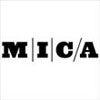
Maryland Institute College of Art (MICA) requires all undergraduates to complete The First Year Experience (FYE), which explores contemporary art and design practice. The rigorous curriculum also highlights skill-building, technology, and 2D, 3D, and 4D media. Upon completion of The FYE, students will move on to their chosen major.
Housed in the Animation Department at MICA is the BFA and Minor in Animation. The Animation BFA Program requires 24 credit hours of study in the major. Course highlights include Digital Tools for Animation, 3D Character Animation: Performance, Stop-Motion Animation, Haptics and Optics, 2D and 3D Character Animation, and Professional Practice for Animators. Students in the program must complete several project courses and Animation Senior Thesis I and II.
The MICA Animation Minor requires 15 credit hours of study. Course examples include Digital Tools for Animation, Stop-Motion Animation, Animation Pre-Production, and Storyboarding for Animators.
The art and design programs at Maryland Institute College of Art have helped launch the careers of thousands of students. MICA alumni are Google Animators, Mobile App Developers, Comic Artists, Filmmakers, and more. They have been hired at DreamWorks, LAIKA Studios, MTV, Disney, and other major networks and studios. Many MICA graduates have also entered graduate programs or launched careers as independent artists in the animation industry.
Founded in 1826, Maryland Institute College of Art is the nation’s oldest independent, continuously degree-granting college of art and design. The school serves nearly 3,500 students from 49 states and 52 countries. Programs at MICA lead to a BFA, MA, MFA, MBA, MPS degree, or post-baccalaureate certificate.
Maryland Institute College of Art is accredited by the Middle States Commission on Higher Education (MSCHE) and the National Association of Schools of Art and Design (NASAD).

The College of Motion Picture Arts at Florida State University (FSU) has an Animation and Digital Arts Program that leads to a BFA. Students in this four year program will spend their first year completing general education requirements. For the next three years, students will immerse in the major.
Course examples for the program include Reality & Illusion in World Cinema, Motion Picture Editing, Story Development and Screenwriting, History & Practice of Visual Effects and Animation, Filmmaking, Lighting, Texturing and Rendering, and Professional Development. The FSU College of Motion Picture Arts provides close to 30 elective options for the BFA program, allowing students to pursue a variety of interests. Examples include Visual Effects (VFX), Screenwriting, Documentary Filmmaking, Film Business, and Marketing and Exhibition.
FSU Animation and Digital Arts students will have the opportunity to complete four major films (including the thesis film), and a professional internship. All FSU College of Motion Picture Arts students may participate in the Torchlight Program, which provides instruction in the financing, marketing, and distribution of films.
Florida State University BFA graduates are prepared to seek positions in the film, television, and animation industries. Potential job titles include Animator, Effects Animator, VFX Artist, CG Lighter, Animation Supervisor, Modeler, Animatics Supervisor, Rigger, and Storyboard Artist.
Founded in 1851, Florida State University serves close to 45,500 students enrolled in nearly 300 degree programs at all levels. One of the largest and oldest universities in Florida, FSU houses 16 colleges and schools at campuses across the state. Florida State University is accredited by the Southern Association of Colleges and Schools, Commission on Colleges (SACSCOC).
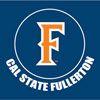
California State University, Fullerton (Cal State Fullerton) houses the College of the Arts, home to Department of Visual Arts. Accredited by the National Association of Schools of Art and Design (NASAD), the Department features partnerships with studios such as Nickelodeon and Walt Disney; access to the Visual Arts Complex, which houses state-of-the-art animation, illustration, drawing, and painting studios; and an Art BFA with an Entertainment Art/Animation Concentration.
Students in this 132-unit program will complete 36 units in the concentration. Course highlights include Cartooning and Caricature, Visual Development and Background Painting, Special Studies in Entertainment Art/Animation, 3D Animation, and Elements of Sequential Art. Other courses include Animation Preproduction, Animation Production, Animal and Wildlife Drawing, and Writing in the Visual Arts. Studio Art electives allow students to explore other areas of art such as illustration, graphic design, photography, kinetic sculpture, and even glass blowing.
In addition to a wide range of course options, the Cal State Fullerton Art BFA Program includes Group Projects, Independent Research, internship opportunities at major studios, and the BFA Capstone.
Cal State Fullerton alumni have worked on The Simpsons, SpongeBob Squarepants, Alvin and the Chipmunks, Superman Returns, Avatar, Ice Age 2, Spiderman 3, and many other productions. BFA program graduates also hold positions at Nickelodeon, Lucasfilm, Sony Games, Cartoon Network, Disney Feature Animation, Disney TV Animation, Sony Pictures Imageworks, and Electronic Arts (EA), among others.
Founded in 1957, California State University, Fullerton is part of the 23 campus California State University (CSU) system. Serving just over 39,550 students. Cal State Fullerton offers 110 degree programs across eight academic colleges. California State University, Fullerton is accredited by the Western Association of Schools and Colleges (WASC) Senior College and University Commission (WSCUC).

Minneapolis College of Art and Design (MCAD) has several pathways to study animation. At the undergraduate level, MCAD has a collaborative Animation BFA Program and a 15 credit-hour Animation Minor. At the graduate level, MCAD has interdisciplinary and experimental Visual Studies MFA Program that allows students to focus in one or more areas of interest. Examples include animation, experimental film and video, comic arts, illustration, drawing and painting, and web and multimedia.
Students in the MCAD MFA Program also benefit from access to some 50 private studios, smart classrooms, state-of-the-art production facilities, and a large gallery space. MCAD MFA students may also participate in the Master’s Trip to NYC featuring visits to art and design venues, creative agencies, and artist studios.
The MCAD Animation Minor explores traditional animation techniques, compositing, storytelling, and pre-production. Students will also learn how to use the latest industry software to create animations. Four classes are required to complete the program: Character Design, Drawing for Animators, Experimental Animation, and Storyboarding.
The Minneapolis College of Art and Design Animation BFA has two tracks: 2D and 3D Animation. Both tracks require 12 credit hours of study within the 120 credit hours required to graduate. Students may focus in other areas through the programs 26 credits of required studio electives. Course examples include 3D Rendering, Experimental Animation, Introduction to Filmmaking, Stop-Motion Animation, and Professional Practice.
Both BFA and MFA students may complete an internship and/or study abroad in places such as Italy, Germany, Japan, and the UK. MCAD Students have interned at Nickelodeon, MTV, Walker Art Center, Massachusetts Museum of Art, among others.
Potential careers for MCAD Animation and Visual Studies graduates include Background Animator, 3D Modeler/Animator, Stop-Motion Animator, Film Editor, Pixel Artist, Special-Effects Animator, Storyboard Artist, Character Developer, Inker/Opaquer/Checker, Director, Producer, Writer, and Project Manager.
Minneapolis College of Art and Design was established in 1886 by the Minneapolis Society of Fine Arts. The school serves more than 800 students from 45 states and 15 countries. Programs include 14 undergraduate majors leading to a BFA or BS, three MA degrees, one MFA degree, and five professional development certificate options.
Minneapolis College of Art and Design is accredited by the National Association of Schools of Art and Design (NASAD) and the Higher Learning Commission (HLC). The school is also affiliated with the Association of Independent Colleges of Art and Design (AICAD).

College for Creative Studies (CCS) has an Entertainment Arts BFA Program with a variety of STEM-designated concentrations. This includes animation. Students in this concentration have the opportunity to customize a specific track. Examples include Traditional Animation, Storyboarding, CG, Visual Development, and Stop Motion. Other program benefits include an optional internship; coursework and mentorships that help students build an understanding of the production pipeline for animation, games, television, and advertising, and a Writing Workshop.
All students at CCS are required to complete 42 to 43 credits in liberal arts and 84 credits in studio. Course examples for the program include 2D Design Principles, Creative Visualization, 2D Digital Animation, Digital Filmmaking, Storyboarding for Film/Animation, Animation Projects I-II, Lighting & Rendering, Computer Character Animation, Advanced Story Concepts, Stop Motion, Environments & Characters, Sound Design, Animation Nuts & Bolts, and Senior Production Studio I-II.
Graduates of the CCS Animation BFA Program are Animators, Directors, Storyboard Artists, Riggers, and VFX Artists, among others. College for Creative Studies alumni have been hired at studios and networks such as DreamWorks Animation, Sony Pictures Imageworks, Disney, and ABC Television Group.
College for Creative Studies was founded in 1906 as the Detroit Society of Arts and Crafts. This private, nonprofit college serves more than 1,400 students enrolled 12 majors leading to a BFA, four programs leading to an MFA, and one program leading to an MA. College for Creative Studies is accredited by the Higher Learning Commission (HLC) and it is an accredited institutional member of the National Association of Schools of Art and Design (NASAD).
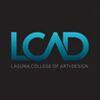
The Animation program at Laguna College of Art and Design (LCAD) has the largest enrollment of any other program at the school. Degree options include BFAs in Animation and Experimental Animation.
An Animation Minor that provides instruction in the principles of both traditional and CG animation is also available. Courses for the program include Animation 1, Character Design for Animators 1, Storyboarding 1, CG Animation 1, and Animation 2. History of Animation is strongly recommended for this program, but it is not a requirement.
The Animation BFA provides instruction and hands-on training in creating animated characters, filmmaking (editing, directing, screenwriting, sound design), pitching stories, and working in teams. The program consists of a combination of liberal arts and studio courses. Examples of liberal arts courses include Age of Michelangelo, Illuminating Women: Female Artists, Scientists, Poets, and Philosophers of the Renaissance, Worldly + Otherworldly Creatures, Traditional Arts of West Africa, and the Science of Sight.
Examples of studio courses and other course requirements include Character Design for Animators, Digital Skills, Acting for Animators, CG Modeling, Directing for Animators, Visual Development for Animators, and Figure Drawing for Animators. Animation BFA students will also complete the Animation Practicum, and the Senior Capstone and Thesis Defense course.
The Experimental Animation BFA Program at Laguna College of Art and Design is led by experienced instructors who are active in the television, film, games, and animation industries. With class sizes limited to 18 students, the program emphasizes learning by doing. This means, students will complete several projects throughout the program, including Experimental Thesis Film 1 and 2. In addition, students may specialize in one or more of the following areas: storyboarding, internet series projects, and show design.
Course examples for the Experimental Animation BFA Program include Fundamentals of Maya, 2D Analog/Digital Puppetry, Directing for Limited and Experimental Animation, Paperless Animation, Experimental Stop Motion Techniques, Compositing for Animators, Animation for New Media, Art Direction for TV and New Media, New Media Auteur, Storyboarding for Limited Animation, and Character Design or Limited Animation and Stop Motion.
Students in all LCAD Animation Programs have the opportunity to participate in the LCAD Animation Film Festival (LAFF). Held annually, LAFF is a theatrical exhibition that showcases the best student animated films.
Graduates of the LCAD Animation Programs are routinely hired by major television, film, games, and animation studios. Examples include Warner Brothers Feature Animation, Obsidian Entertainment, Pixar, The Jim Henson Company, Sony, South Park Studios, Cartoon Network, Nickelodeon, Disney, LAIKA Studios, DreamWorks, Fox, Industrial Light & Magic (ILM), and Titmouse.
Founded in 1961, Laguna College of Art and Design began as Laguna Beach School of Art (LBSA). In addition to the main campus in Laguna Beach, LCAD has educational affiliates locally and around the world including Florence Academy of Arts in Florence, Italy, Los Angeles Academy of Figurative Art, and NHTV Breda University of Applied Sciences (NHTV), Netherlands.
Laguna College of Art and Design serves around 770 students enrolled in dozens of degree and minor programs. The school is regionally and nationally accredited by the Western Association of Schools and Colleges (WASC) Senior College and University Commission (WSCUC) and the National Association of Schools of Art and Design (NASAD).

Purdue University (Purdue) houses Purdue Polytechnic Institute (Purdue Polytechnic). Within the Institute is the Department of Computer Graphics Technology (CGT), which has several paths to study animation. Options include a CGT BS with a Major in Animation or Animation and Visual Effects, CGT MS, and a 5-Year CGT BS/MS. The CGT MS Program participates in Purdue’s Computational Interdisciplinary Graduate Program.
The CGT BS/Animation Program focuses on Character Rigging, Motion, Lighting, 3D Modeling, Rendering, and Texturing. Using the same software used in the animation industry, such as Maya and Autodesk, BS students will create animations, games, films, and other related productions.
The CGT BS/Animation and Visual Effects explores areas such as Animation, Computer Rendering, Audio, Special Effects, Video, and Digital Lighting. Visual Effects at Purdue is a STEM-based discipline, so students will also take courses in Physics, Calculus, and Trigonometry. The animation business is also explored, including coursework in marketing, management, business writing, and entrepreneurship.
Graduates of Purdue University’s CGT BS/Animation and Animation and Visual Effects Programs are routinely hired at studios such as Walt Disney and DreamWorks. Some graduates go on to teach at schools such as Animation Mentor, while others have launched their own studios and freelance businesses.
The Purdue University CGT MS provides study and training in Animation, Games, Information Visualization, and UX Design. A large number of course options allow students to concentrate in a specific area. Because the CGT MS program is interdisciplinary, students have opportunities to take coursework across other Purdue graduate programs.
MS students who would like to study animation may choose the Thesis or Non-Thesis option. Those in the Non-Thesis option will complete a Senior Capstone. Course examples across options include The Art and Technology of Computer Animation, Visual Intelligence and Perception, The Development of Graphics in Technology, and Seminar in Computer Graphics Technology. Elective requirements also allow students to explore other areas.
Purdue University CGT MS alumni are Animators, Technical Directors, Digital Lighting Specialists, Simulation and Visualization Specialists, Riggers, and Technical Artists at both independent and major studios.
Students with a graduate degree from Purdue University are eligible to apply to the Technology PhD Program. Also offered in Purdue Polytechnic Institute’s Department of Computer Graphics Technology, the PhD program supports study and research Computer Animation, Game Studies, Human-Computer Interaction, User Experience (UX) Design, and other related areas.
Graduates of the CGT PhD Program at Purdue University go on to pursue careers in entertainment, academics, technology, and government, among others.
Founded in 1869, Purdue University began classes in 1874 with six instructors and just 39 students. Today, the school serves approximately 50,885 students, with around 5,600 enrolled in Purdue Polytechnic Institute. Founded in 1964 as Purdue University’s School of Technology, Purdue Polytechnic houses seven departments and schools offering dozens of technology-centered programs. Purdue University offers more than 400 programs across 10 colleges and schools. Purdue is accredited by the Higher Learning Commission (HLC).

The College of Arts & Media (CAM) at University of Colorado Denver (CU Denver) houses the Department of Visual Arts (VA) and the Digital Animation Center (DAC). Together, the VA Department and DAC manage the Visual Arts BFA Program. Students who would like to study animation can enroll in the 3D Graphics and Animation Emphasis Area.
This 120 credit hour program includes courses such as Animation Foundations, Digital Cinematography, 2D Design, Advanced Character Animation, 3D, Advanced Character FX, Production I-II, Lighting & Rendering, Surface Modeling, and Reproduction Look Development. In the junior year of the program, VA BFA students will begin an 18-month Capstone experience—the Senior Film.
In collaboration with departments across CAM, animation students will work in all areas to create this final project. They will create sound, effects, storylines, soundtracks, motion graphics, and more. Students may also participate in the internship program during the final years of the program.
Graduates of the CU Denver VA BFA with 3D Graphics and Animation have produced films that have been screened at more than 300 film festivals in 22 countries. Program graduates have also won more than 75 Best Animated Short awards in non-student categories.
University of Colorado Denver animation alumni are employed in a variety of positions at major studios such as Pixar, Sony, and LucasArts.
University of Colorado Denver began in 1912 as an extension of the University of Colorado Boulder. The school became CU Denver in 1973, making it an independent campus. Organized into eight colleges and schools, CU Denver serves 15,000 students enrolled in more than 110 academic degrees. University of Colorado Denver is accredited by Higher Learning Commission (HLC).
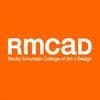
The Animation Program at Rocky Mountain College of Art and Design (RMCAD) has two options: 2D Animation and 3D Animation. Leading to a BFA, both programs require courses in the areas of 2D and 3D drawing, modeling, character design, line of action, storyboarding, and stop motion. However, the 2D Animation BFA is designed for students interested in traditional animation, while the 3D BFA emphasizes computer animation.
While both the 2D and 3D Animation Programs are offered on-campus and online, campus-based students are required to take part in online education to experience learning in a virtual environment.
RMCAD Animation graduates will leave the program with a professional portfolio of their best work. Program alumni have been hired at major networks and studios such as Industrial Light & Magic (ILM), Pixar, Nickelodeon, and Cartoon Network. Alumni are Animators, Story Artists, 3D Modelers, Texture Artists, Lighting Artists, and 3D Artists, among others.
Rocky Mountain College of Art and Design began in 1963 as Rocky Mountain School of Art. Serving more than 1,000 students, RMCAD offers 16 degree and certificate programs offered in campus/hybrid and online formats. Rocky Mountain College of Art and Design is accredited by the Higher Learning Commission (HLC) and it is an accredited institutional member of the National Association of Schools of Art and Design (NASAD).

The College of Engineering, Computing and Applied Sciences (CECAS) at Clemson University (Clemson) houses the School of Computing—home to the Division of Visual Computing and the Digital Production Arts (DPA) Program. Pathways for animators include the DPA MFA and DPA MS. A Digital Production Arts Minor is jointly offered by the Department of Art in the College of Architecture, Arts and Humanities, and the School of Computing. Launched in 2011 the Minor requires a minimum of 15 credit hours of study.
Digital Production Arts at Clemson University encompasses dozens of disciplines. However, each DPA program pathway has its own learning objectives. The curriculum for the MFA DPA pathway blends computer science and engineering, psychology, graphic communications, art, philosophy, and performing arts. Course examples include Technical Character Animation, Physically Based Animation, Visual Foundations of Digital Production, 3D Modeling and Animation, and Special Effects compositing.
The 60 credit hour DPA MFA at Clemson no longer requires the GRE and it is the terminal degree in the field. Graduates are prepared for a range of roles in the film and animation, video, electronic gaming, and visual effects industries. Graduates have been hired at major studios such as Industrial Light & Magic (ILM), Pixar, DreamWorks, Electronic Arts (EA), Walt Disney Animation Studios, ReelFX, and Sony Pictures Imageworks.
Established in 2017, the DPA MS focuses on the technical and visual effects aspects of film production, games, and commercial video. The program includes many of the same animation courses offered in the DPA MFA, which provides many opportunities for students to develop their animation skills. Other course examples include Software Construction, Advanced Computer Graphics, Human and Computer Interaction (HCI), 2D Game Engine Design, and Virtual Reality. Six required electives allow students to explore areas such as visual narrative, drawing, improvisation, scene painting, and audio engineering.
In addition to technical roles in the animation industry, graduates of the Clemson University DPA MS Program can pursue positions such as Technical Director, Software Engineer, VR Developer, 3D Graphics Programmer, or Tool Builder in the broad entertainment industry.
Clemson University began as Clemson Agricultural College in 1893. The school serves approximately 27,340 students enrolled in more than 200 degree programs and 90+ minors across seven colleges and a graduate school. Clemson University is accredited by the Southern Association of Colleges and Schools Commission on Colleges (SACSCOC).

The School of Film at University of the Arts (UArts) has three paths to study animation including a BFA in Animation, a BFA in Film & Animation, and a Minor in Animation. The School of Film encourages collaboration between schools, so students have opportunities to study design, acting, photography, and other disciplines.
The Animation BFA Program allows students to focus in 2D, 3D, Stop Motion/Experimental, or a hybrid focus path. The Film & Animation BFA explores many styles and genres in both animation and filmmaking. Examples include traditional animation, narrative, computer-generated animation, documentary, stop motion, and experimental. Across programs, students will have opportunities to work with professionals and faculty associated with major studios and networks such as Disney Animation Studios, Nickelodeon, Comedy Central, HBO, Cartoon Network, and Netflix.
The curriculum for the BFA Programs combines a collaborative, hands-on teaching environment with internships at studios such as Augenblick, and study away experiences in places such as France and South Korea. Students will also participate in lectures, screenings, and formal critiquing sessions designed to evaluate their progress and work.
A major component of the Animation Programs at University of the Arts is the Professional Practices class. This multifaceted course, which takes place in the final year of the program, includes guest speakers, personal branding development, mock interviews, social media strategies, design, and resume building. At the end of the course, students will have the opportunity to display their final portfolio reels online.
The Animation Program at UArts also provides access to a 5,600-square-foot space known as the Center for Immersive Media (CIM), which allows students to explore other areas such as human-computer interaction (HCI), VR/AR, and performance motion-capture. In addition to CIM, animation students have unlimited access to computer labs and state-of-the-art animation, film, and stop-motion studios.
University of the Arts Animation graduates are Character Animators, Storyboard Artists, Effects Animators, Computer Animators, Art Directors, Clay/Puppet Animators, Directors, Scientific Animators, Forensics Animators, and Background Artists, among others.
UArts graduates have been hired at a number of local companies such as unPOP, Alkemy X, and Center City Film & Video. UArts alumni also work at major companies, studios, and networks such as Netflix, Walt Disney Animation Studios, Google, DreamWorks, HBO, and Sony Interactive Entertainment.
Founded in 1876 as part of the Philadelphia Museum of Art, University of the Arts serves nearly 1,500 students enrolled in over 40 degree programs in fine arts, design, media arts, dance, music, theater, and crafts. More than 20 minors are available and open to all students. UArts programs are offered in the Schools of Art, Dance, Design, Film, Music, Theater Arts, and Graduate and Professional Studies. University of the Arts is accredited by the Middle States Commission on Higher Education (MSCHE).

Arizona State University (ASU) provides several paths to study animation across a number of institutes, departments, and schools. The Herberger Institute for Design and the Arts houses the Schools of Art; Arts, Media and Engineering; and Music, Dance and Theatre; The Design School; The Sidney Poitier New American Film School; and the ASU Art Museum.
The School of Art provides 13 undergraduate and five graduate programs. Minors are offered in Studio Art and Art History. Pathways for animators include an Art BFA with a Concentration in Animation and an Art MFA. The ASU Herberger School of Arts, Media and Engineering houses the Digital Culture BA Program. An interdisciplinary, 21 credit hour undergraduate Minor, and an 18 credit hour Certificate in Digital Culture are also available.
The Art BFA with a Concentration in Animation consists of 120 credit hours of study. Elective options allow students to gain experience in other areas such as game engine development, visual effects (VFX), or photography. Other program benefits include internship opportunities and the Animation Capstone, which leads to an independent short film or a full-length film produced as a team.
Art MFA students have the opportunity to complete projects in a discipline of their choice in their own private studios. Other program highlights include visiting artist lectures, workshops, and teaching opportunities.
ASU Herberger graduates work in animation and film, games and game development, cinema and television, AR/VR, illustration, robotics, medical illustration, scientific and data visualization, fine arts and many other areas. ASU alumni are Animators, Creative Directors, VFX Artists, Graphic Artists, Multimedia Designers, and Art Directors, among others.
The Digital Culture BA in the School of Arts, Media and Engineering features a number of courses that allow students to focus in animation. Examples include Animating Virtual Worlds, Introduction to Computer Animation, 2D Digital Animation, 3D Computer Imaging and Animation, Stop Motion Animation, Experimental Video Art, 3D Tools, Introduction to Animation for Film, and Motion Graphics & Animation.
Graduates of the ASU BA in Digital Culture have opportunities to work in animation and film, gaming and entertainment, media arts, computing, and communications, among others.
Arizona State University serves approximately 140,760 students, making it one of the largest universities in the U.S. Founded in 1885 as the Arizona Territorial Normal School, ASU has four campuses that provide 800 fully accredited degree programs across 16 colleges and schools. Arizona State University is accredited by the Higher Learning Commission (HLC).

California State University, Long Beach (CSULB) houses the College of the Arts (COTA). One of the universities largest and most popular colleges, COTA consists of six separate academic units including the School of Art, The Bob Cole Conservatory of Music, and the Departments of Film and Electronic Arts, Dance, Design, and Theatre Arts. The School of Art houses the Art BFA and MFA Programs. The BFA has an Illustration/Animation Option and the MFA has an Illustration/Animation Track.
For the BFA Program, students may choose one of three Tracks within the Option: Animation, Illustration or Pre-Production. Consisting of 132 units, the Art BFA Program requires 31 units in the Animation Track, six units of upper division Art History courses, and nine units of electives. Examples of required courses include Core Studio: Animation - Practices, Core Studio: Animation - Design 1-2, Professional Practices in Illustration/Animation, Core Studio: Animation - Story Art, Advanced Studio: Animation Filmmaking, Advanced Studio: Animation - 3D CG 1, Experimental Animation, and Animation Senior Project.
Electives provide opportunities to create additional works. Elective examples include Costumed Figure Drawing, Experimental Animation, Advanced Animation Practices, Animation: Acting and Staging, and Animation Senior Film I-II.
The Art MFA-Illustration/Animation Track requires 39 units in the focus area. Course examples include Experimental Animation 2, Graduate Studies: Advanced Illustration/Animation, Animation 4, Computer Animation 2, Graduate Studies: Directed Studio, Writing for Artists, Graduate Studies: Image as Text, and Graduate Studies: Professional Practices for Visual Communication. In the final semester of the program, students will take the Graduate Studies: MFA Project course with members of the student’s Project Committee.
The COTA Department of Film and Electronic Arts has an Option in Theory and Practice of Cinema. Within the Option is a Specialization Track in Postproduction. The Track provides several courses for animators including 3D Computer Animation, Digital Arts Production, Color Correction, Editing, Sound Design, and Audio Production. Students in this program also have access to courses such as Advanced Screenwriting, Alternative Media, Writing the Short Script, Film Production, and Studio Directing.
Graduates of the COTA BA, BFA, and MFA Programs at California State University Long Beach will enter the job market with a professional portfolio of their best work. Program alumni are prepared for careers such as Animator, Animation Technical Director, Character Animator, Compositing Artist, Illustrator, Art Director, Storyboard Artist, and Forensic Animator.
California State University, Long Beach was established in 1949. One of the 23 campuses of the California State University System, CSULB serves more than 38,000 students enrolled in over 300 programs across eight colleges. California State University, Long Beach is accredited by Western Association of Schools and Colleges (WASC) Senior College and University Commission (WSCUC).
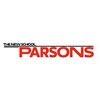
The New School (The New School) houses Parsons School of Design, which is the largest of the school’s seven colleges. Within Parsons School of Design is a Design and Technology Program that has BFA and MFA pathways. The MFA is a STEM-designated, studio-based degree that requires on-campus study. Consisting of 60 credit hours of study, the MFA includes courses and studios such as xFab Lecture and Lab, Creative Practice Seminar, Collaboration Studio, Major Studio, and Thesis Studio.
Also a STEM-designated program, the 120 credit hour BFA in Design and Technology focuses on interaction, storytelling, and emerging art and design practices. Specializations include Creative Technology and Game Design. Course examples include Code 2, Design Studies, Core Lab Objects, and Core Studio Environments.
All undergraduate students at The New School Parsons must complete the first-year experience. Consisting of 30 credits, the experience includes seminars and studios, liberal arts studies, and the exploration of 2D and 3D processes, digital design, drawing, and other tools and methods relevant to art and design. Course examples include Time, Sustainable Systems, Drawing/Imaging, Objects as History, Space/Materiality, and Integrative Seminar 1-2.
The School of Continuing & Professional Education at The New School Parsons has an additional option for animators. Leading to a Certificate, the Motion Design and Animation Program consist of three courses that explore the production process from start to finish. This includes storyboarding, editing, special effects, film production, and more. The Certificate Program can be taken alone or in combination with the Design and Technology BFA or MFA Programs.
Students in all New School programs have the opportunity to interact with and work on projects with professionals at places such as Apple, Siemens, Nickelodeon, the Metropolitan Museum of Art, gameLab, Samsung, MTV, Rockwell Interaction Lab, Atari, UNESCO, OnePlus Technology, and Eyebeam Art & Technology Center.
Graduates of the BFA, MFA, and Certificate programs at The New School Parsons are prepared for success in a wide range of positions in areas such as 2D and 3D animation, game design, advertising, VR/AR, UI/UX, graphic arts, interaction design, film and television, mobile and application design, digital filmmaking, web design, hardware engineering, media art, and software design.
The New School Parsons was founded in 1896 as The Chase School. The school serves approximately 10,815 students enrolled more than 120 degree and diploma programs across six colleges and schools, including Parsons Paris. The New School Parsons is accredited by the Middle States Commission on Higher Education (MSCHE).

The School of Film and Television at Loyola Marymount University (LMU) houses the Walter and Grace Lantz Undergraduate Animation Program. Students in this program will study traditional and digital techniques to develop films, television productions, video games, and emerging media forms. Animation students will gain hands-on experience in storytelling, 3D filmmaking, visual effects (VFX), stop-motion animation, and motion capture, among others. Programs lead to a BA or a Minor in Animation.
The LMU BA is a four year program that requires 45 semester hours of study in upper division coursework. The Minor consists of 18 semester hours of study and is open to all LMU students, regardless of major. Course examples across programs include Visual Story Development, 3D Computer Animation, Discovering Animation, Pixel Animation, Animated Perspectives, Virtual Production, Character Development, Interactive Animation, History of Animation, Immersive Media Studio, and Animation Workshop.
The Animation BA requires a significant number of electives, allowing students to focus their studies in an area of interest. During the final year of the Animation BA Program, students will complete the Animation Practicum and Senior Thesis Project.
Graduates of Animation Programs at Loyola Marymount University are prepared for positions in animation, film, games, design, television, advertising, science, medicine, law, and education, among others. Animation Program alumni have worked on a number of major productions such as Wonder Woman, Superman: Doomsday, Green Lantern: First Flight, The Simpsons, and The Simpsons Movie.
Loyola Marymount University was established in 1911. The school serves 10,000 students enrolled in 55 undergraduate majors, 58 minors, 46 master's degree programs, one education doctorate, one doctorate in juridical science, one juris doctorate, and 14 credential programs across seven colleges and schools. Loyola Marymount University is accredited by the Western Association of Schools and Colleges (WASC) Senior College and University Commission (WSCUC).
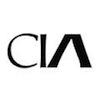
The Animation Program at Cleveland Institute of Art (CIA) prepares students for careers in animation through work experiences with real clients and community partners, internships, and both independent and collaborative projects. Students in the program are also mentored by veteran industry professionals with hundreds of feature film credits. CIA faculty have worked with major studios and companies such as DreamWorks, Warner Bros., Walt Disney Feature Animation, Hasbro, Sony Animation, Illumination, American Greetings.
Leading to a BFA, the CIA Animation Program consists of courses such as Experimental Animation, Advanced 3D Animation, Narrative Production, Animation Portfolio Reel + Shorts, 3D Modeling for Concept Vehicles, and Community Projects: Animation Production (EP). Open electives allow students to declare a customized focus area in their junior year, study outside the program, and collaborate with other CIA departments.
In the senior year of the CIA Animation BFA Program, students will work on a thesis project. Through the Animation Portfolio Reel + Shorts course, students will develop and present an industry-ready portfolio and demo reel in their focus area.
Graduates of the Animation BFA Program at Cleveland Institute of Art have worked on feature films, games, and television series. Program alumni also work in the medical, sports, and communications industries, among others. Graduate are Animators, Storyboard Artists, Game Designers, 3D Character Animators, and Independent Filmmakers, among others.
Cleveland Institute of Art was chartered as the Western Reserve School of Design for Women in 1882. This independent, not-for-profit college serves around 600 students enrolled in 13 entertainment arts, design, fine arts, and craft majors. Cleveland Institute of Art is accredited by the National Association of Schools of Art and Design (NASAD) and the Higher Learning Commission (HLC).

The Animation BFA Program at Kansas City Art Institute (KCAI) is housed in the Department of Converging Media. Because Filmmaking, Interactive Arts, and Photography are also housed in the Department, cross-disciplinary study is encouraged. Animation students may also declare a double major in Art History and Animation or Creative Writing and Animation. Both options require 141 credit hours to graduate.
Animation BFA course examples include Digital Methods, Explorations in Animation, Contemporary Animation History, and Ideas in Motion. Elective options for the KCAI Animation BFA run the gamut from Documentary and Narrative Storytelling to The Art of Stop Motion Puppetry and Filmmaking and Animation. The Professional Practice course, taken during the senior year of the program allows students to interact and network with visiting artists, scholars, and industry professionals.
Also during the final year of the program, students will engage in two six-credit studios where they will have the opportunity to conceptualize and produce an animated work. Students may also complete an internship at a local or national studio.
Many graduates of the Kansas City Art Institute BFA in Animation Program go on to pursue advanced degrees at top institutions such as School of Visual Art New York (SVA NY), University of California Los Angeles (UCLA), University of Missouri Kansas City (UMKC), and California Institute of the Arts (Cal Arts). Others have been hired at major studios, companies, and networks such as Nickelodeon, Titmouse, Warner Bros., Disney, Netflix, Hallmark, and Digital Domain.
Kansas City Art Institute was established in 1885 as a Sketch Club. Situated within Kansas City’s arts corridor—just steps from the Nelson-Atkins Museum of Art—this four-year art and design college serves more than 700 students enrolled in 13 majors across 15 program areas. Kansas City Art Institute is accredited by the Higher Learning Commission (HLC) and the National Association of Schools of Art and Design (NASAD).

The College of the Arts (COTA) at University of Florida (UF) is home to the Digital Worlds Institute. Founded in 2001, the Institute began as a partnership between COTA and the College of Engineering. Today, the Digital Worlds Institute has expanded to include six additional colleges, with a focus on advanced media systems.
The Digital Worlds Institute at University of Florida has two program options for animators—a Digital Arts & Sciences BA (BADAS) and a DAS Minor. BADAS students benefit from a project-based learning environment that allows them to gain hands-on experience and team-building skills. Electives are offered in three areas: Animation, Experience Design & Production, and Game Design. UF BADAS students may choose coursework in one or more of these areas based on their interests and career goals. Students may also take electives outside of the BADAS Program. The remaining courses for the program are in the BADAS cores and general education (30%).
BADAS core courses explore areas such as 2D and 3D animation, digital storytelling, writing for interactive media, mobile games, design and production, digital visualization, game content creation, and digital technologies. Course examples include Digital Storytelling, 2D Digital Animation Techniques, Writing for Interactive Media, Advanced Digital Animation Techniques, Principles of Interaction & Usability, Design Production Studio, 3D Modeling and texturing, 3D Character Animation, and Advanced 2D Digital Animation Techniques.
Elective examples include Blockchain Innovation in Digital Arts and Sciences, Digital Tools for Arts and Humanities, and Undergraduate Research in DAS. All students must complete the senior project and a portfolio. Independent study, an internship, and production practicum are optional.
Graduates of the Digital Worlds Institute at University of Florida are prepared for positions in a variety of areas from animation, game design, and filmmaking to science and technology. Institute graduates have been hired at major studios and companies from DreamWorks Animation to Microsoft. Many graduates have also gone on to launch their own studios and freelance businesses.
University of Florida was founded in 1858 as Gainesville Academy. When it opened, the Academy has just a few students. Today, UF serves approximately 61,110 students enrolled in more than 300 undergraduate and graduate programs across 16 colleges and schools. The University of Florida is accredited by the Southern Association of Colleges and Schools Commission on Colleges (SACSCOC).

Drexel University houses the Antoinette Westphal College of Media Arts & Design, which lists several programs for animators. Options include the Animation and Visual Effects BS, the Dual Animation and Visual Effects BS/Digital Media MS, a Digital Media PhD, and a 24 credit hour Animation and Visual Effects Minor. The Dual BS/MS consists of coursework and projects in animation, 3-D modeling, interactivity, gaming, advanced digital design, and digital media history, theory, and methods. This program requires a minimum of 232 credit hours to graduate.
Drexel University has one of the nation’s top cooperative (co-op) education programs, so students in all degree programs have the opportunity to gain valuable hands-on experience prior to graduation. During the junior year of undergraduate programs, students will spend six months working full-time in the industry. Positions may be paid or unpaid. Dual BS/MS students will participate in three co-op experiences in the second, third, and fourth years of study.
The Animation & Visual Effects (VFX) Program provides instruction and hands-on training in 3D modeling, character design, scripting and storytelling, motion capture, compositing, storyboarding, and rigging. Students apply the skills they have learned to co-op positions in animation, visual effects, technical direction, and 3D at Cartoon Network, Pixar, Sony Studios, FuseFX, and MediaKraft TV, among others.
The Digital Media MS at Drexel University is a two-year program that focuses on research and medias applications. Areas explored include animation, gaming and digital media history, 3D modeling, and interactivity. Students in the program will complete several independent, industry-sponsored, student-created or faculty-approved projects. Past projects have focused on animation design, advanced animation production techniques, narrative comics, and video games, among others.
The PhD is a research-driven degree program that take place in an experiential learning environment. Besides entertainment, PhD students may conduct research in business, engineering, health, education, or other areas.
Graduates of the Animation/VFX and Digital Media Programs at Drexel University work in a variety of positions at major companies and studios such as Disney, Microsoft, XBOX, DreamWorks, NCSoft Corp., and Pixar.
Drexel University was established in 1891 as Drexel Institute of Art, Science, & Industry. The school serves approximately 23,215 students enrolled in more than 200 degree programs across 15 colleges and schools. Drexel University is accredited by the Middle States Commission on Higher Education (MSCHE). The Animation & Visual Effects (VFX) and Digital Media Programs are accredited by the National Association of Schools of Arts & Design (NASAD).

University of North Carolina School of the Arts (UNCSA) houses the School of Filmmaking and the School of Design & Production. The School of Filmmaking is home to Animation BFA, and the School of Design & Production (S&P) is stand-alone design and production conservatory that houses the Animatronics MFA.
The Animation BFA requires 121 credit hours of study. The first year consists of liberal arts and foundations courses in filmmaking. At the end of the first year, students will complete a portfolio for entry into the Animation Program. Once admitted, students will begin exploring character design, storytelling, lighting techniques, drawing, and props. Third year students will complete a three-minute animation project and begin working on the final fourth-year project. This final project consists of a five minute film that will serve as the BFA Thesis.
During the junior or senior years, students may complete an internship or independent study as well as upper level elective courses to enhance the degree. UNCSA Animation BFA students have interned at major studios such as Sony Pictures Imageworks and Stargate Studios.
Graduates of the Animation BFA Program at UNCSA have worked with Cartoon Network and Prologue Pictures, among others.
The Animatronics MFA in the School of D&P launched in Fall 2021. This hybrid, three-year program blends electronics and animation. Students will take hands-on, immersive courses that explore animatronic programming and design, engineering and infrastructure of animatronic figures, sculpting, 3D printing, and project management. Other program benefits include seminars and workshops led by professionals in the industry and access to a 100,000 square feet of state-of-the-art production space.
The Animatronics MFA Program at University of North Carolina School of the Arts culminates with a final project (thesis) conducted in collaboration with an advisor.
Graduates of the Animatronics MFA Program at University of North Carolina School of the Arts have launched their careers at places such as Nickelodeon, Universal Studios, and Walt Disney Imagineering.
North Carolina School of the Arts was established in 1963 by the N.C. General Assembly. The school opened in 1965, becoming the nation’s first public arts conservatory. North Carolina School of the Arts became part of the University of 17-campus North Carolina System in 1972, and was renamed University of North Carolina School of the Arts. Today, UNCSA serves more than 1,300 students enrolled in dozens of programs across five schools. University of North Carolina School of the Arts is accredited by the Southern Association of Colleges and Schools Commission on Colleges (SACSCOC).
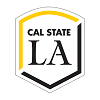
The Department of Art at California State University, Los Angeles (Cal State LA or CSU) has an Animation Option that combines the study of experimental, traditional, and contemporary animation techniques with hands-on learning in digital classrooms, labs, and other facilities. Part of the College of Arts & Letters, the Art Department provides access to the Stop-Motion Animation Labs, Design Library, and the Tool Crib. Art Department students will also have opportunities to exhibit in the student-run COMA Gallery and/or Ronald H. Silverman Fine Arts Gallery.
The Animation Option is a path within the Art BA Program. The program requires a minimum of 98 units of coursework, including 48 units in the Option, and students may take select electives from art and film offerings. Course examples include Story and Visualization, Art and Motion, Digital Modeling, Three-Dimensional Animation, Advanced Animation, Experimental Animation, Video for Artists, Digital Design Tools, Color Theory and Perception, World Animation History, and Advanced Illustration. A Capstone Animation Project worth up to six credits is required to graduate.
Also within the Art Department is the Art MA and MFA Programs. Both provide the opportunity to enroll in the Design Option (Graphic Design/Visual Communication, Animation). The Art MA requires 30 units to graduate, while the MFA requires 60 units. Elective options allow students to take additional coursework in animation. Course examples across programs include Advanced Animation, Two-Dimensional Animation, Graduate Interactive Design, Experimental Animation, Advanced Illustration, and Problems in Advanced Design.
Each semester, students in the Cal State LA Art Department will join professional artists and faculty for several events that provide the opportunity to present their work to their peers and the public. Graduates of the Art Programs at Cal State LA are prepared to pursue careers in animation, game design, screenwriting, storyboard art, visual effects (VFX), art direction, production, advertising, film editing, and special effects, among others.
Established in 1947, California State University, Los Angeles serves approximately 27,030 students enrolled in more than 150 degree, certificate, and minor programs. Part of the 23 campus, California State University System of nearly 480,000 students, Cal State LA is comprised of nine colleges and the University Library. California State University, Los Angeles is accredited by the Western Association of Schools and Colleges (WASC) Senior College and University Commission (WSCUC). Programs in the CSU Department of Art are accredited by National Association of Schools of Art and Design (NASAD).